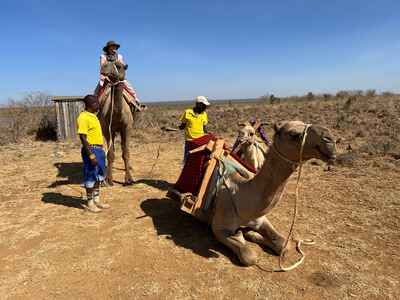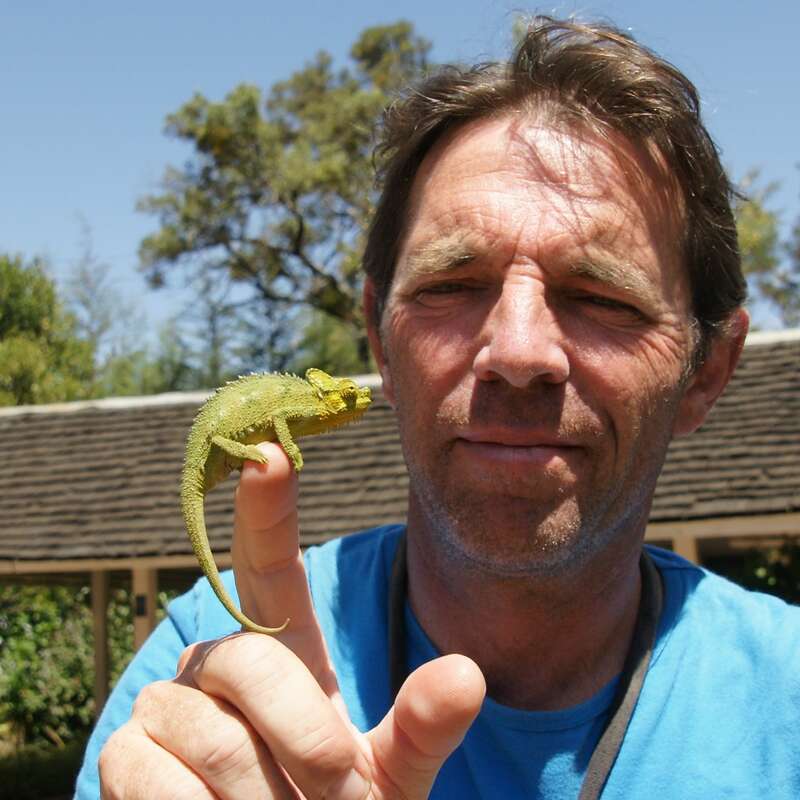About Ekorian's Mugie Camp
Ekorian's Mugie Camp is a small, family-owned tented camp in the Mugie Conservancy in northwestern Laikipia.
It was set up by Kenyans Josh and Donna Perrett in 2012. Ekorian is the Turkana word for the olive wood from which much of it is constructed and, as the only camp in the area, it has a remote, bush feel, which makes for a welcome, low-key refuge.
We loved the personal vibe here, and the fact that the camp is family-owned and many of the staff have been here for years. Very good guiding, from a team who naturally know their conservancy very well, combined with excellent, warm hospitality, make it a good choice for people who like authentic, down-to-earth safaris. It's also a great camp for adventurous families, with plenty of activities.
Our view
We loved the personal vibe here, and the fact that the camp is family-owned and many of the staff have been here for years. Very good guiding, from a team who naturally know their conservancy very well, combined with excellent, warm hospitality, make it a good choice for people who like authentic, down-to-earth safaris. It's also a great camp for adventurous families, with plenty of activities.
Accommodation
6 tents
Children
Good for any age
Open
All year
Activities

Private activities
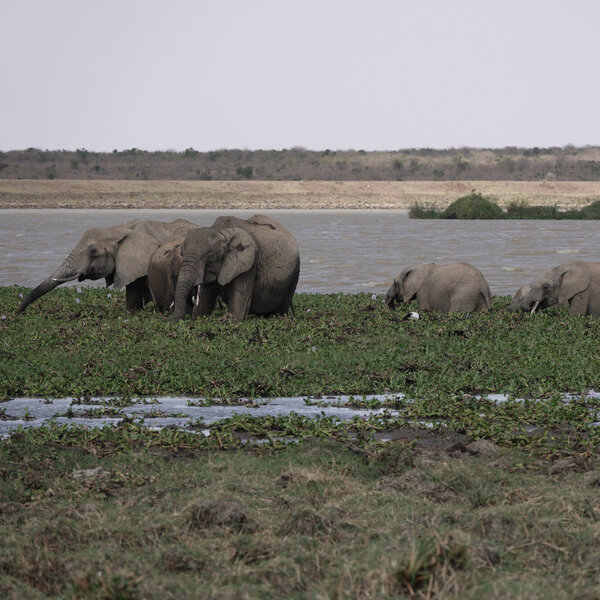
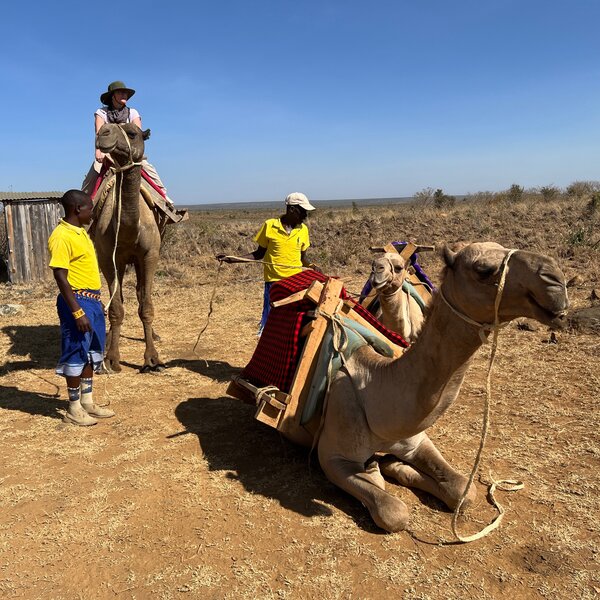
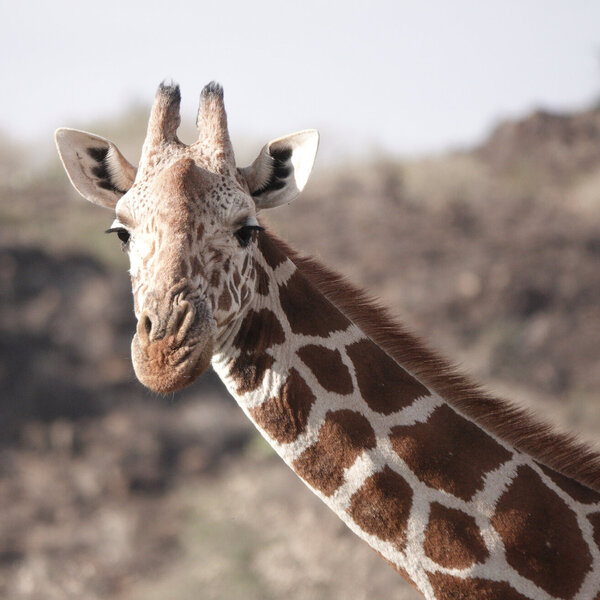
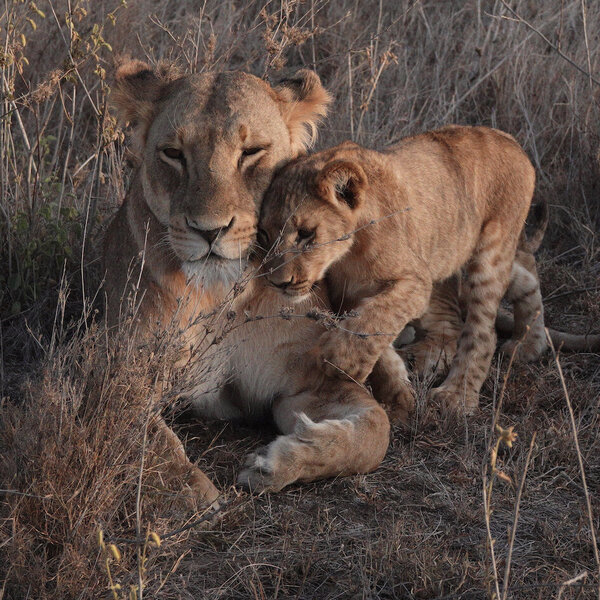

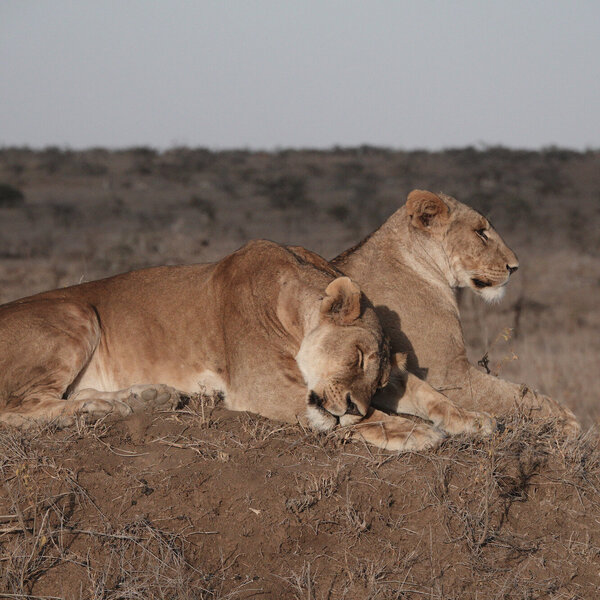
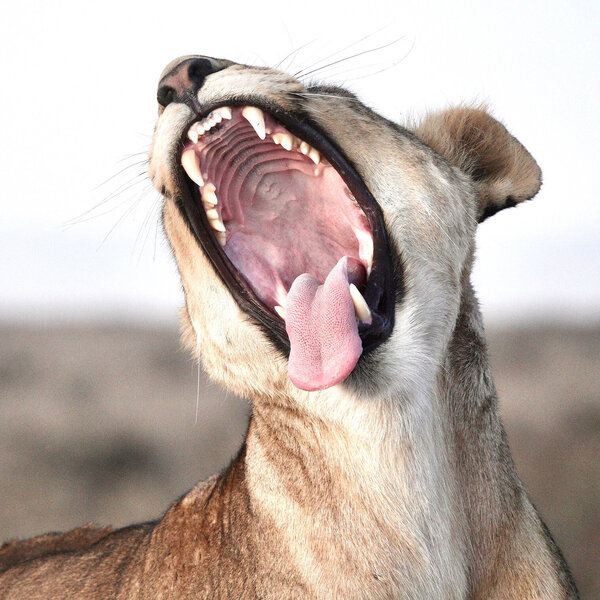
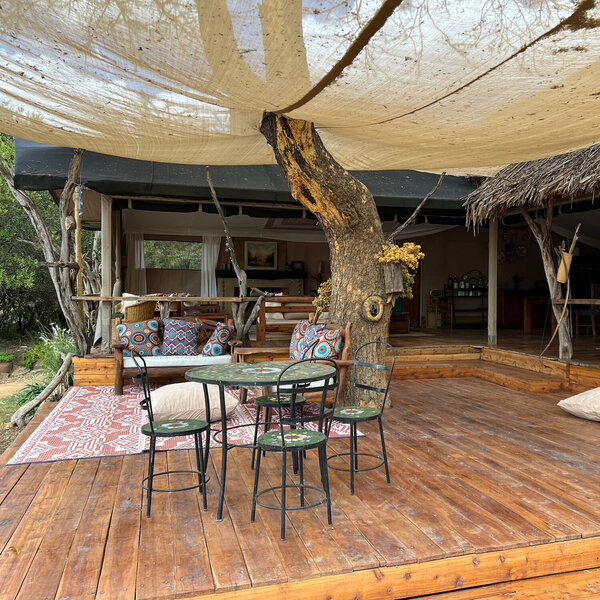
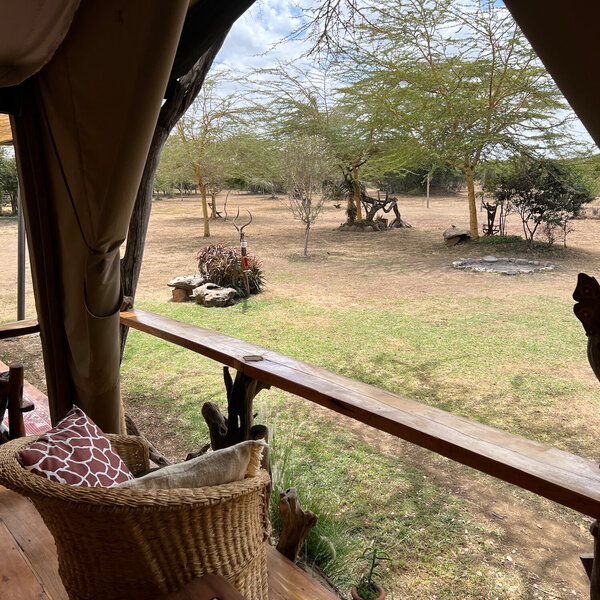
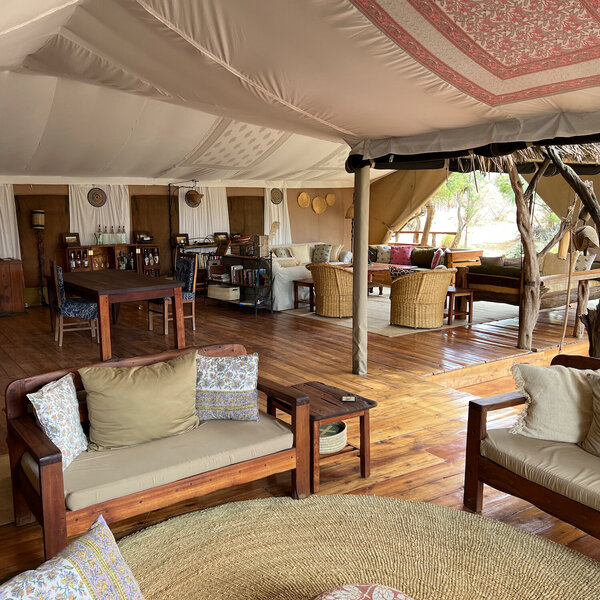
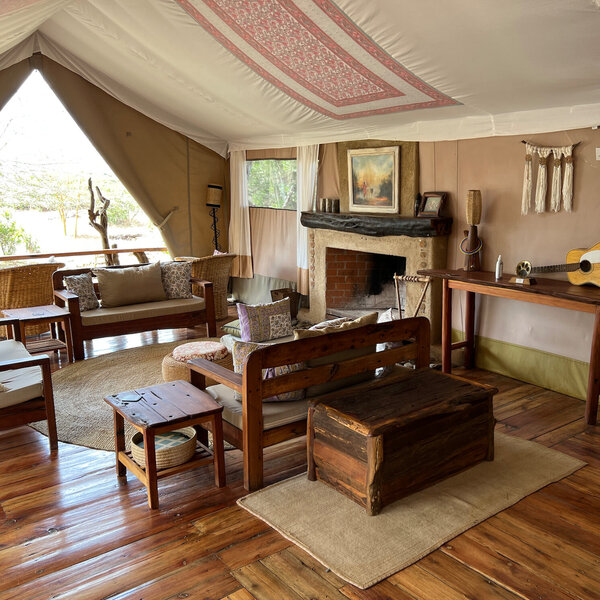
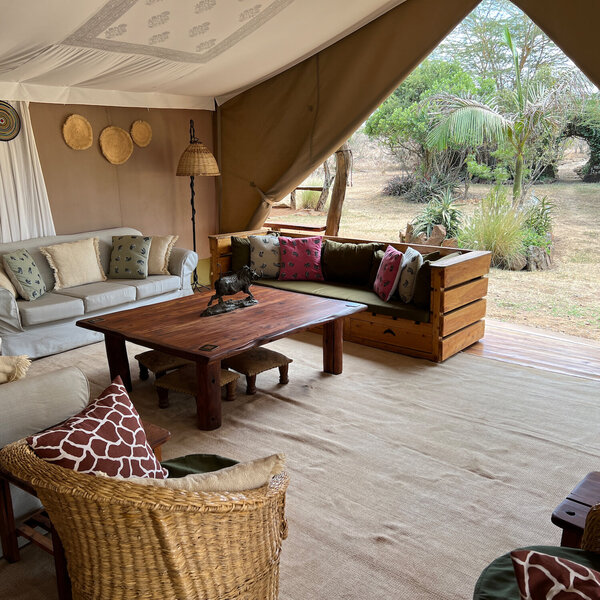
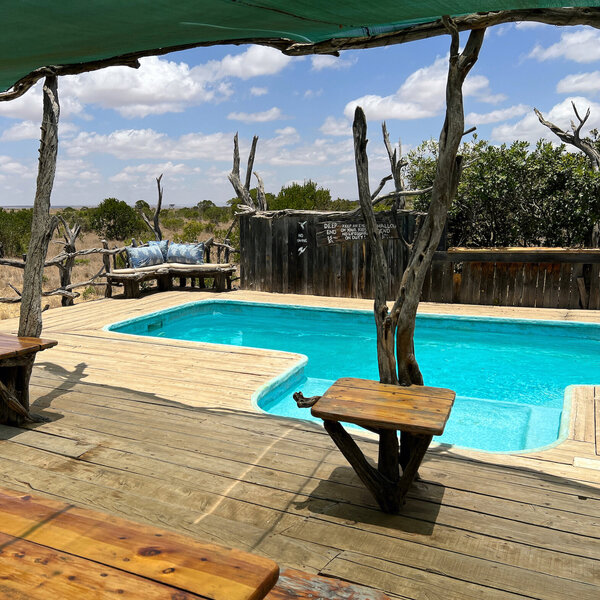
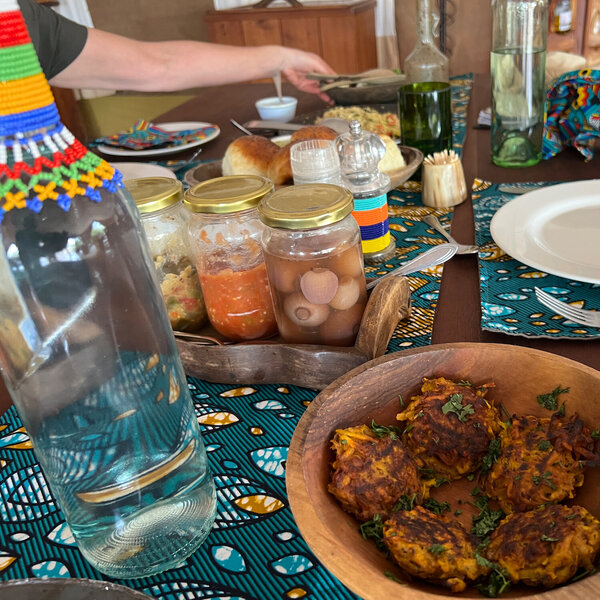
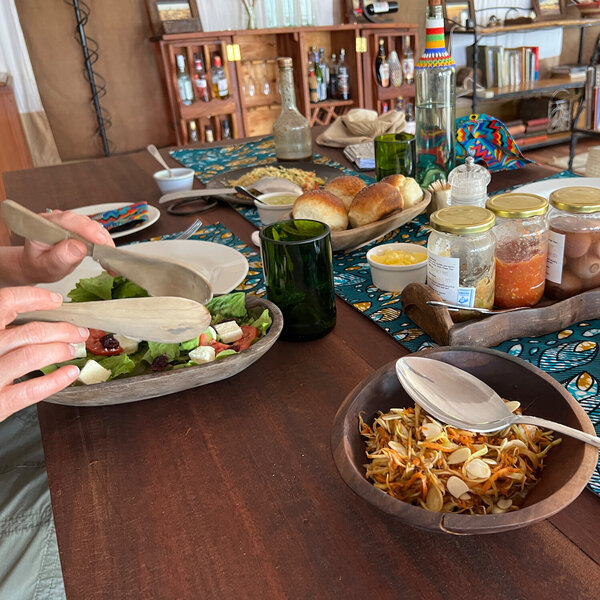
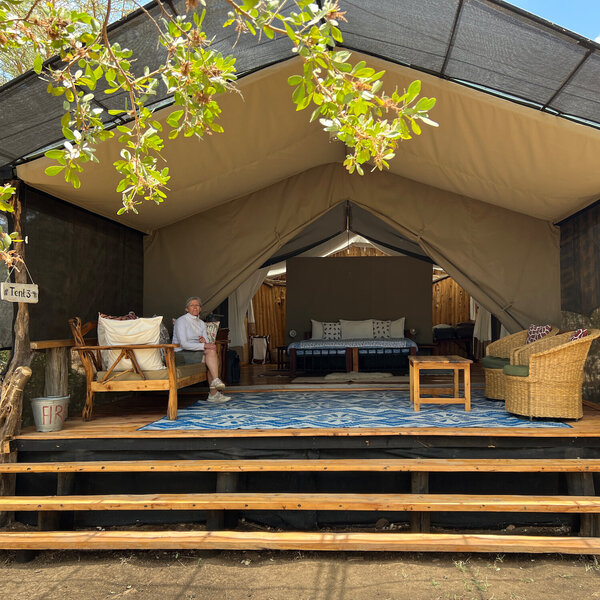
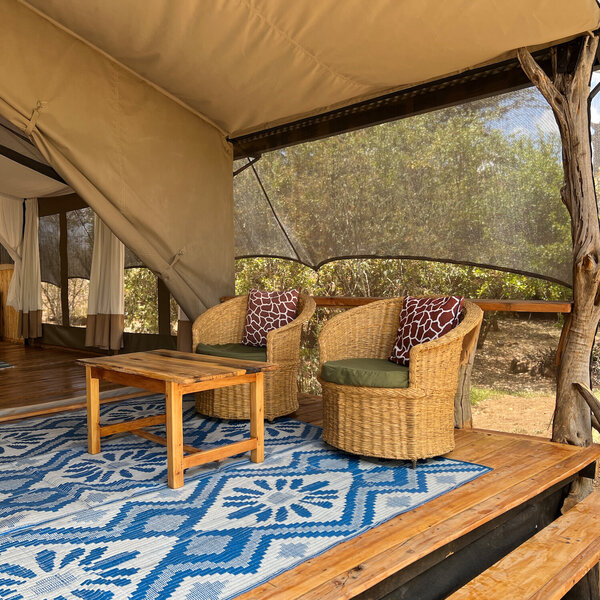
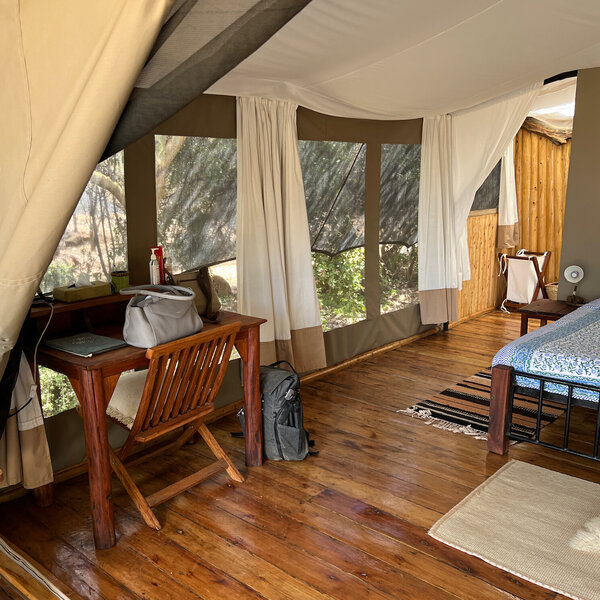
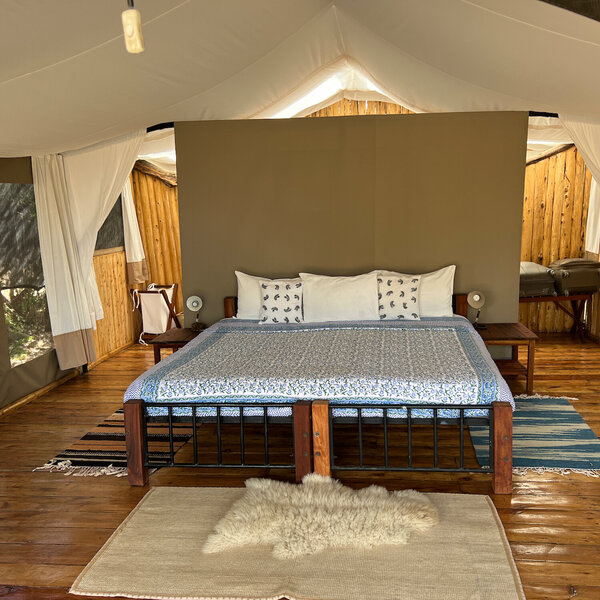
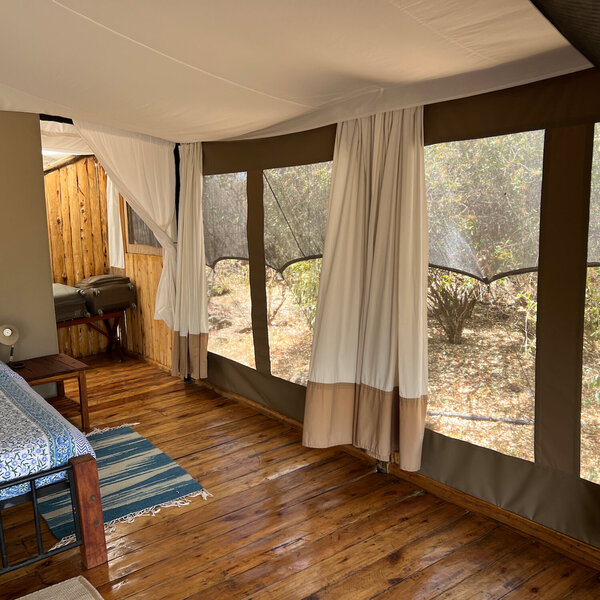
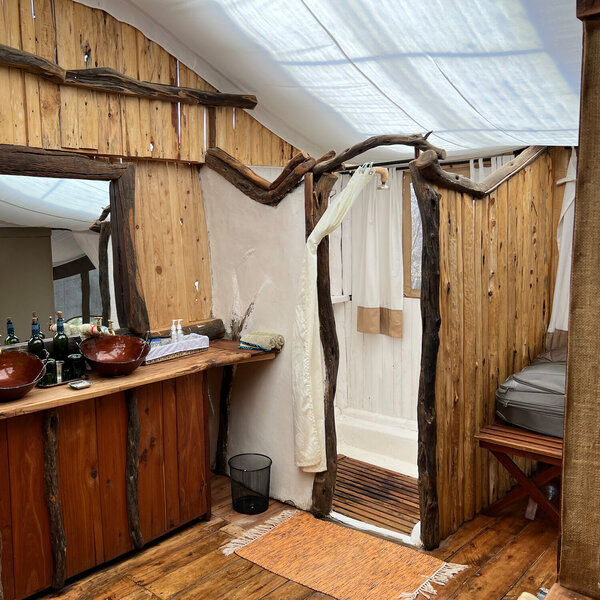
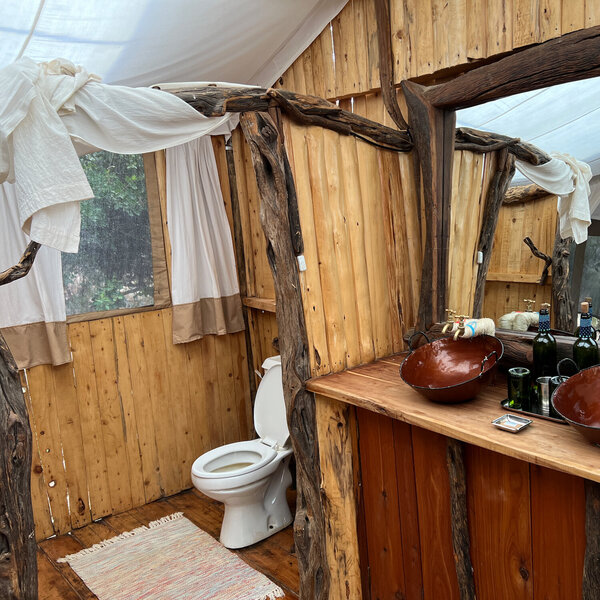

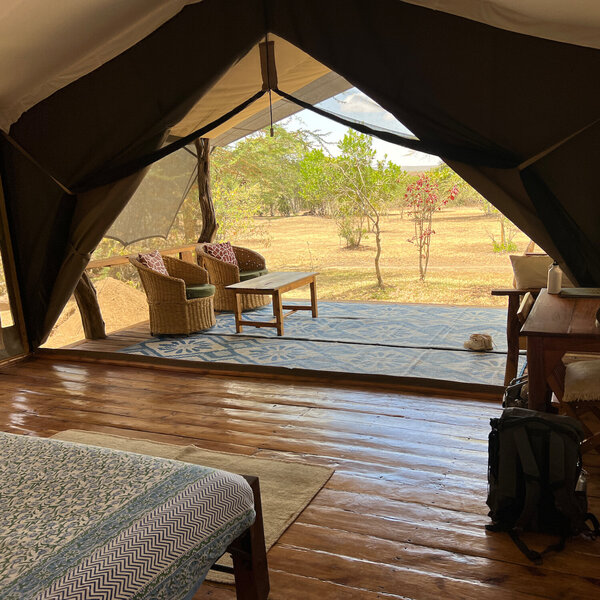
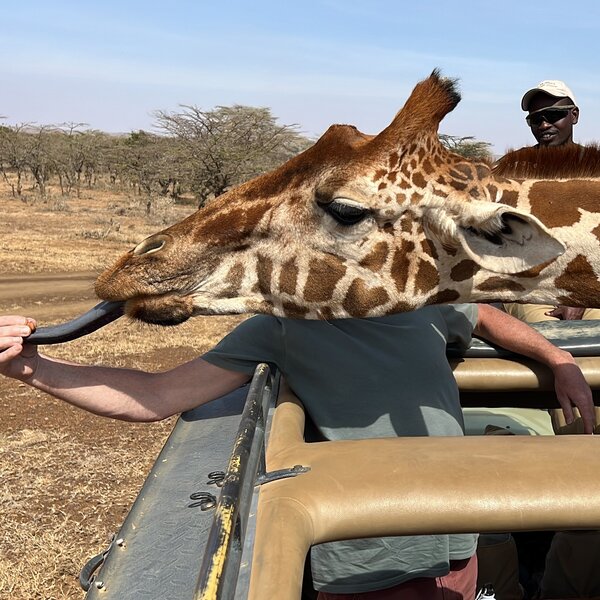
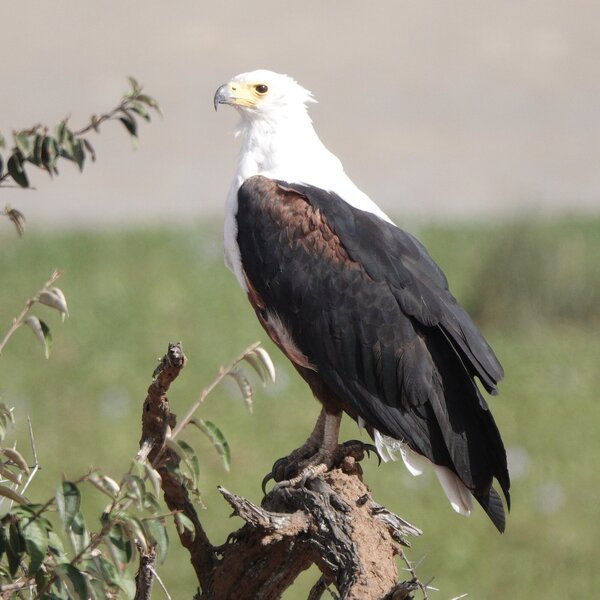
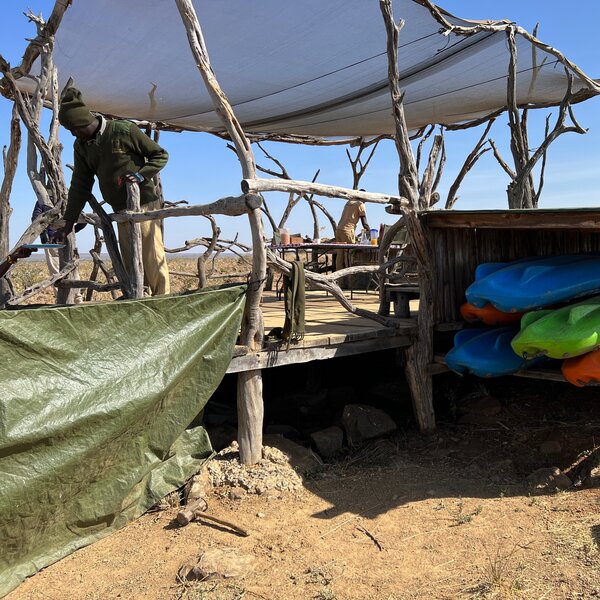
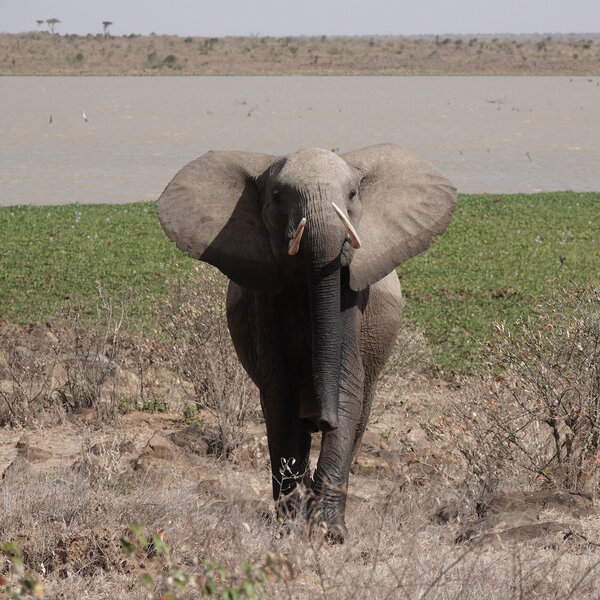
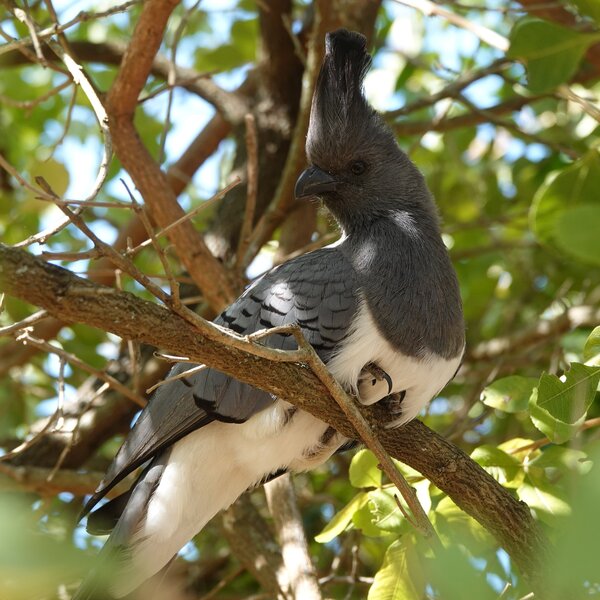
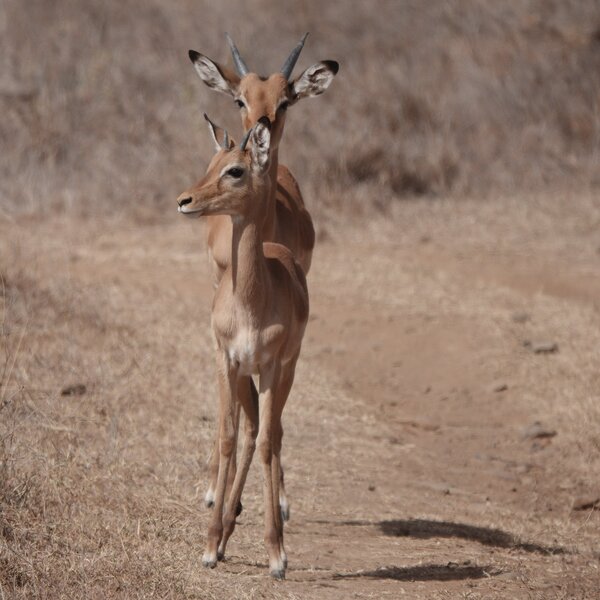
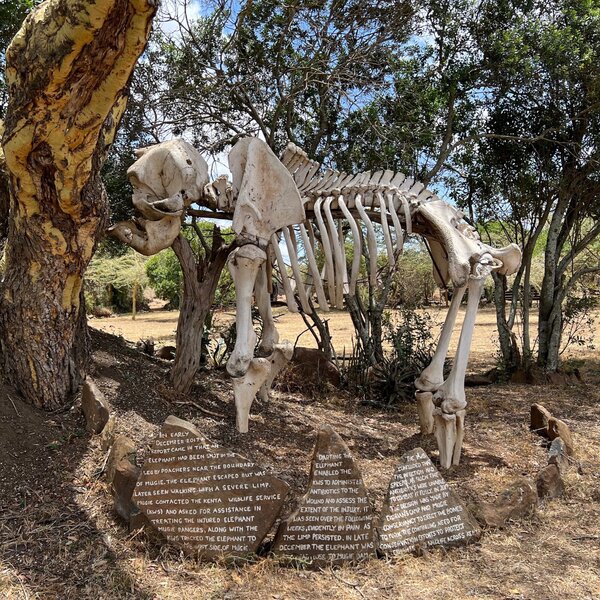
Expert Africa's gallery
When we travel we take lots of photos ourselves to give you a real and un-edited view of the safaris. See our 32 pictures of Ekorian's Mugie Camp to get the candid view.
View galleryEkorian's Mugie Camp: Our full report
Ekorian's Mugie Camp is a small, family-owned tented camp in the Mugie Conservancy in northwestern Laikipia.
It was set up by Kenyans Josh and Donna Perrett in 2012. Ekorian is the Turkana word for the olive wood from which much of it is constructed and, as the only camp in the area, it has a remote, bush feel, which makes for a welcome, low-key refuge.
Arriving at camp you enter through a gate and you'll be welcomed and briefed by the manager in the relative cool of the comfy mess/lounge tent, with its sofas and armchairs.
This central area includes a small crafts shop and a WiFi tent which also has plenty of sockets for charging your batteries. You can also charge them in your tent, but they may take longer to charge.
The six, reasonably well-spaced guest tents are arranged in a line across the back of the camp, facing northwest, with vegetation screening them from each other for privacy. Each tent is mounted on a substantial platform, with steps at the front, and each one has a generous deck area – an inviting space to relax and welcome the day, or rest during the middle of it – with a large bedroom and living area immediately inside the tent. At the back, there's a spacious and light bathroom area, with twin basins, a loo on one side and a plumbed-in shower on the other. The bathrooms are unusual in having an overhead "window" allowing daylight to illuminate what is often a dark area in most safari camp tents. The flooring is made of attractively polished boards, softened with mats, rugs and sheepskin throws.
Tent #1, closest to the mess tent, is one of two family units (the other being #6, furthest away), which each have an additional twin bedroom tent attached to one side. These are ideal for families with two or three young children (an extra bed can also be added), but might not be ideal for adult families as they only have one bathroom and privacy is lacking.
One less positive feature of the guest tent set-up is the fact that the back of the each tent around the bathroom is walled-in with rustic wooden planking, which while being attractive is not mosquito-proof. It's to be hoped they will enclose the rear of the bedroom area with mosquito proofing at some point, without which the afternoon insect-spraying during the turndown service is ineffectual. It's worth noting that during Expert Africa's stay in a very dry period in early 2023 we didn't encounter many mosquitos here, but that may not be the case throughout the year.
On the other side of the lawn from the guest tents, tucked against the camp's perimeter stone wall, is a small, neat swimming pool, set in a wooden deck, with shade and loungers. It's barely big enough to swim three strokes (around 5m x 2.5m) but on a hot afternoon it's a welcome respite, and children will love it. Other distractions include volleyball, archery and trampolining. Children will need strict supervision at the pool and when trying some target practice, but the trampoline has a safety net surround. A nearby elephant skeleton, mounted under a tree, is a reminder of the area's conservation needs and the precariousness of life in northern Kenya.
The main activities at Ekorian's are morning and afternoon game drives on the plains and around the dams of Mugie Conservancy. We saw good numbers of elephants and other plains wildlife and came across a large, lethargic lion pride which we watched up-close as the sun went down and the cubs woke up.
At no extra charge, you can also do camel rides. The camels are based a Bobong Farm, the Perrett's family property, along the road to Rumuruti, and a typical try-out ride starts from the picnic/kayak site by the dam south of the camp, and wends back to camp, with the camels roped together, led by a herder and followed, at a good distance, by a game-drive vehicle in case you change your mind halfway. Camel rides typically take place after a dam-side picnic breakfast at the end of your morning game drive. The ride requires no skill and is not too uncomfortable, and gives you an enjoyable 3-metre-altitude vantage point.
If you want to kayak on the dam, you'll be accompanied by a guide and you may get quite close to wildlife drinking at the water's edge. The guide will ensure hippos are well clear as you paddle.
Other activities at no extra charge include morning birding walks around the camp, fishing in the dam for tilapia and catfish (you can have your catch cooked if you want), night drives with a spotlight, ranch activities (livestock dipping on Saturdays), visits to Mugie Conservancy's anti-poaching bloodhound team, and visits to the weekly Pokot-Samburu market at the roadside community of Posta.
Two activities available at extra cost are: a visit to a Samburu or Pokot village compound, where you'll have a chance to enter a traditional house and observe some of the way of life of these pastoral communities; and (in an entirely different cultural sphere) a round of golf at Mugie's nine-hole course in the north of the conservancy (Kenya's northernmost golf course). Clubs and a caddie are included.
Activities
Private activities
Families & children
- Attitude towards children
- Ekorian's is family- and child-friendly, with safe, fenced grounds for letting of steam and a flexible attitude to meals.
- Property’s age restrictions
- None
- Equipment
- The camp has a baby cot and a high chair
- Generally recommended for children
- Yes
- Notes
- Babysitting can easily be arranged with a member of staff, while parents have dinner.
Food & drink
- Usual board basis
- Full Board & Activities
- Food quality
- The quality of the food at Ekorian's is generally very good and we enjoyed our meals here, with three courses served at lunch and dinner.
- Dining style
- Individual Tables
- Dining locations
- Indoor and Outdoor Dining
- Further dining info, including room service
- Meals are generally eaten in the lounge-dining tent, but you can also eat on the pool deck, by the fire pit, or on your own guest tent deck. Most guests have a bush breakfast by the dam on their first morning, and a campfire-style meal set up by the firepit on their last evening.
- Drinks included
- All house drinks are included. Any special requests need to be ordered in advance.
Getting there
- Location
- Laikipia, Kenya
- Ideal length of stay
- 3-4 nights
- Directions
- The nearest scheduled airstrip is Loisaba, roughly a 45-minute drive from camp, depending on any interesting wildlife en route. If you're arriving by private charter flight, the nearest airstrip is Mugie, around 30 minutes from camp.
- Accessible by
- Fly-and-Transfer
Special interests
- Family safaris
- Choose Ekorian's Mugie Camp for an adventurous family safari, with large tents and ample space for kids to play safely. Activities include kayaking, camel riding, game drives, and bird walks, offering a mix of traditional and unique safari experiences.
- See ideas for Family safaris in Kenya
Communications
- Power supply notes
- Most of the camp's power is provided by solar panels. Kuni boilers (wood boilers) provide hot water. The backup generator is turned on very occasionally. Batteries are best-charged in the WiFi/Charging tent in the central area of the camp. An extension cable is available to extend to guest tents, on occasions when guests need to use a CPAP machine.
- Communications
- There is limited WiFi, mostly in the "WiFi/Charging Tent".
- TV & radio
- The staff canteen has a TV, which guests are welocme to watch for major sporting fixtures.
- Water supply
- Borehole
- Water supply notes
- Shower and laundry water comes from their well, but drinking water is provided by rain collection, which is then boiled and filtered and offered in jugs and bottles in each tent.
Health & safety
- Malarial protection recommended
- Yes
- Medical care
- There are several trained first aiders and there's a clinic at the Mugie Conservancy headquarters. In an emergency, a helicopter can land in camp.
- Dangerous animals
- Moderate Risk
- Security measures
- The camp is fenced and walled and an askari patrols it at night.
- Fire safety
- There is a fire extinguisher at the front of each tent
Useful info
- Disabled access
- On Request
- Laundry facilities
- Laundry is included in the rates, and is hand-washed, sun-dried and ironed. Underwear isn't accepted, but soap powder is provided in the guest tents.
- Money
- There are lock-up safes in the tents, however they are not secured to anything, and they are not very heavy.
- Accepted payment on location
- Visa, MasterCard and Amex are accepted, as is cash in major international currencies.
Plan and book your trip with Expert Africa
All of our trips are tailor-made, so we'll always adapt them to suit you. Talk to an Expert and let us plan and arrange your perfect trip.

Talk to an Expert
Call or email us now! We’ll match you with the Specialist in our team who is best suited to help you. Then together we can start planning your trip.

Set up your itinerary
Based on our experience and your ideas, your specialist will create a detailed, costed itinerary. We’ll refine it together, until we have a trip that you’re perfectly happy with.

Prepare for your trip
The same Specialist will make the seamless arrangements for your trip, send you detailed travel documents, and be available to answer any questions before you depart.

Travel with peace of mind
After you set off, you’ll be cared for by our partners in Africa, most of whom have worked with Expert Africa for decades. And if you ever need us urgently, we’re available 24/7.

When you return
We love to learn about your trip, and so will always be grateful if you’ve the time to give feedback to your Specialist when you return.
Ekorian's Mugie Camp's location
Look closer at the environment and surroundings of Ekorian's Mugie Camp.
Other lodges in Laikipia
Alternative places to stay in this same area.
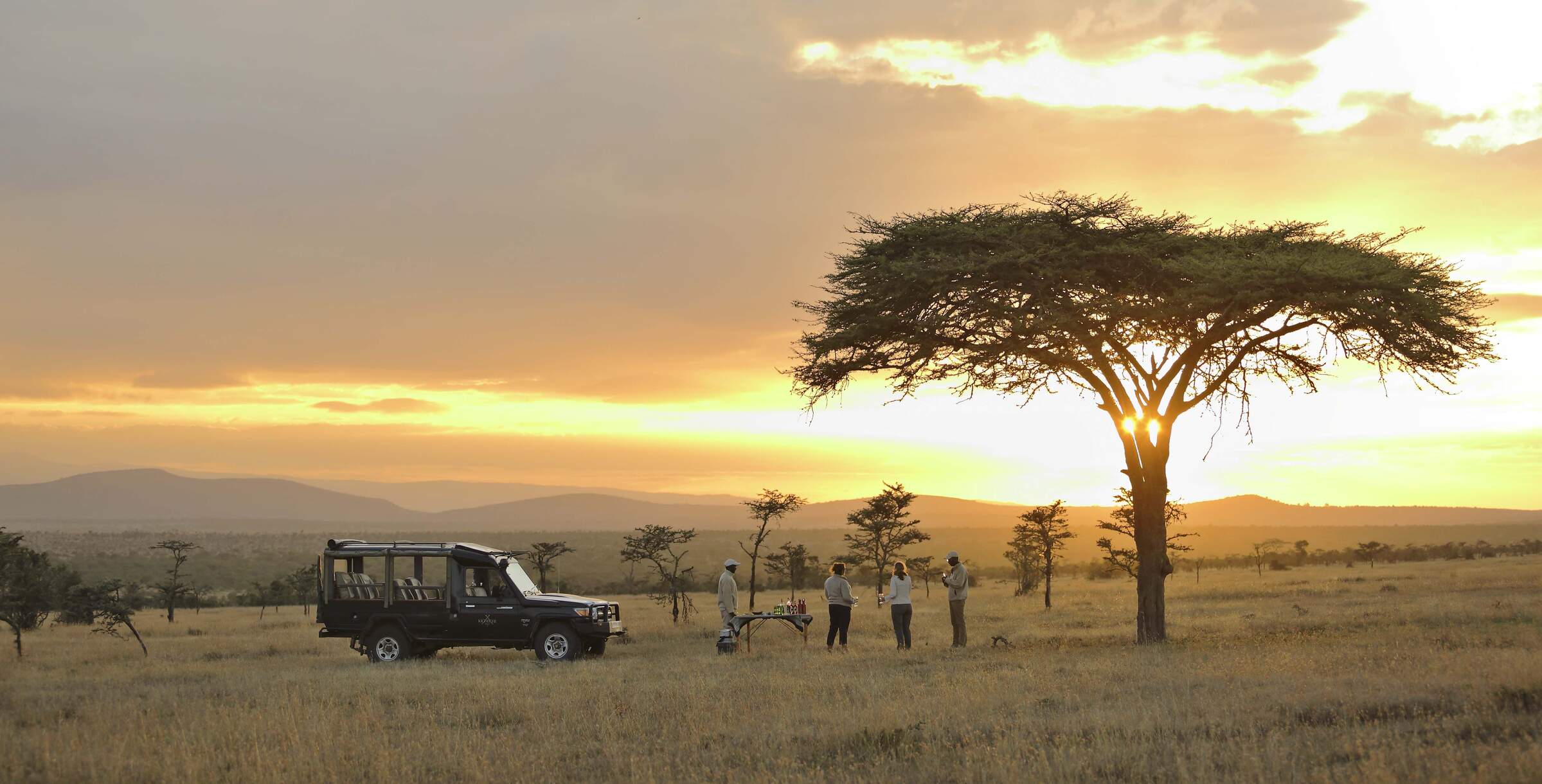
Kicheche Laikipia
Kicheche Laikipia is the most luxurious tented camp of the handful of places to stay in the Ol Pejeta Conservancy in central Laikipia.
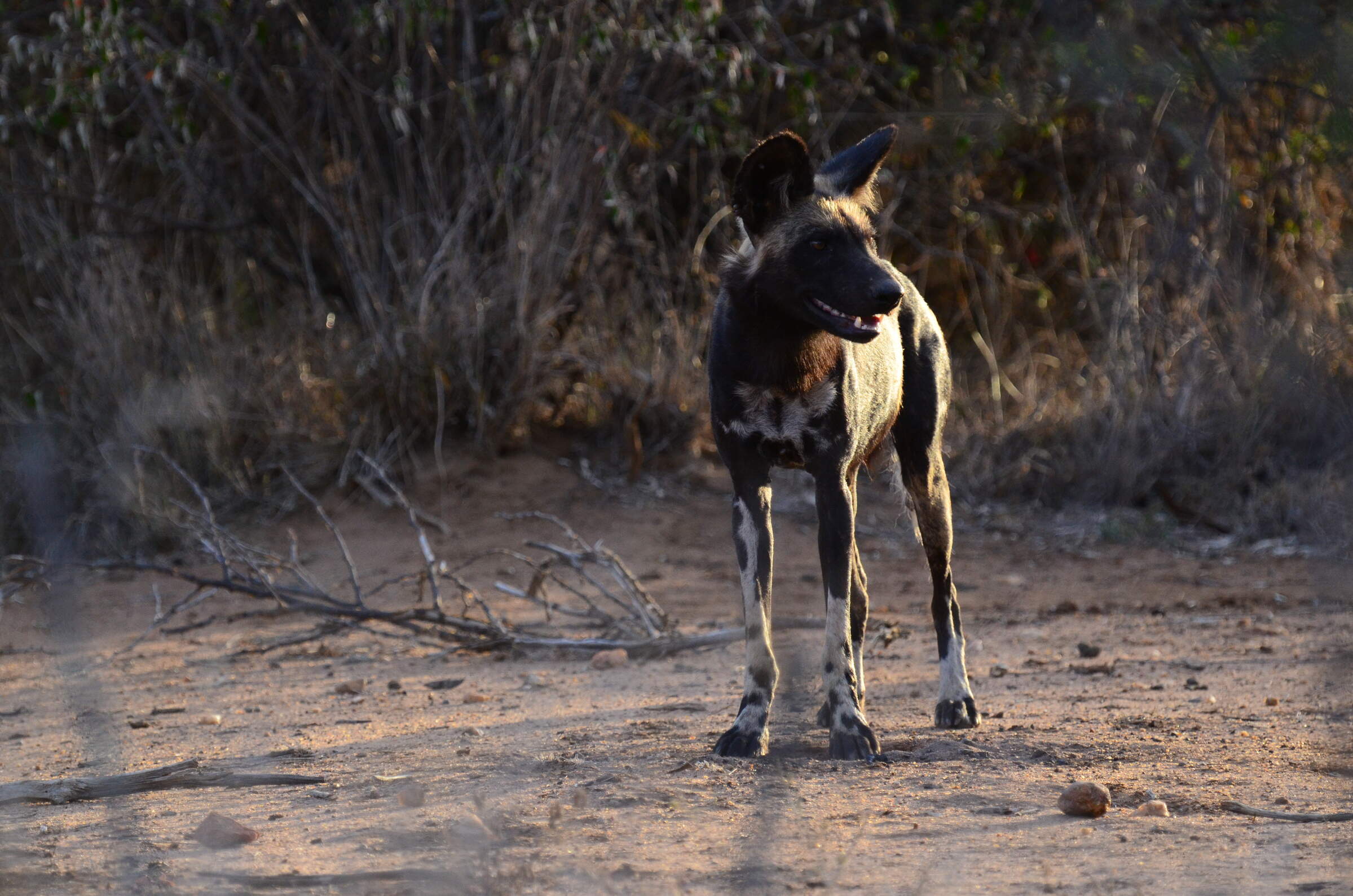
Laikipia Wilderness
Laikipia Wilderness is a rustic owner-managed bush camp, in excellent wild dog territory, offering outstanding guiding.
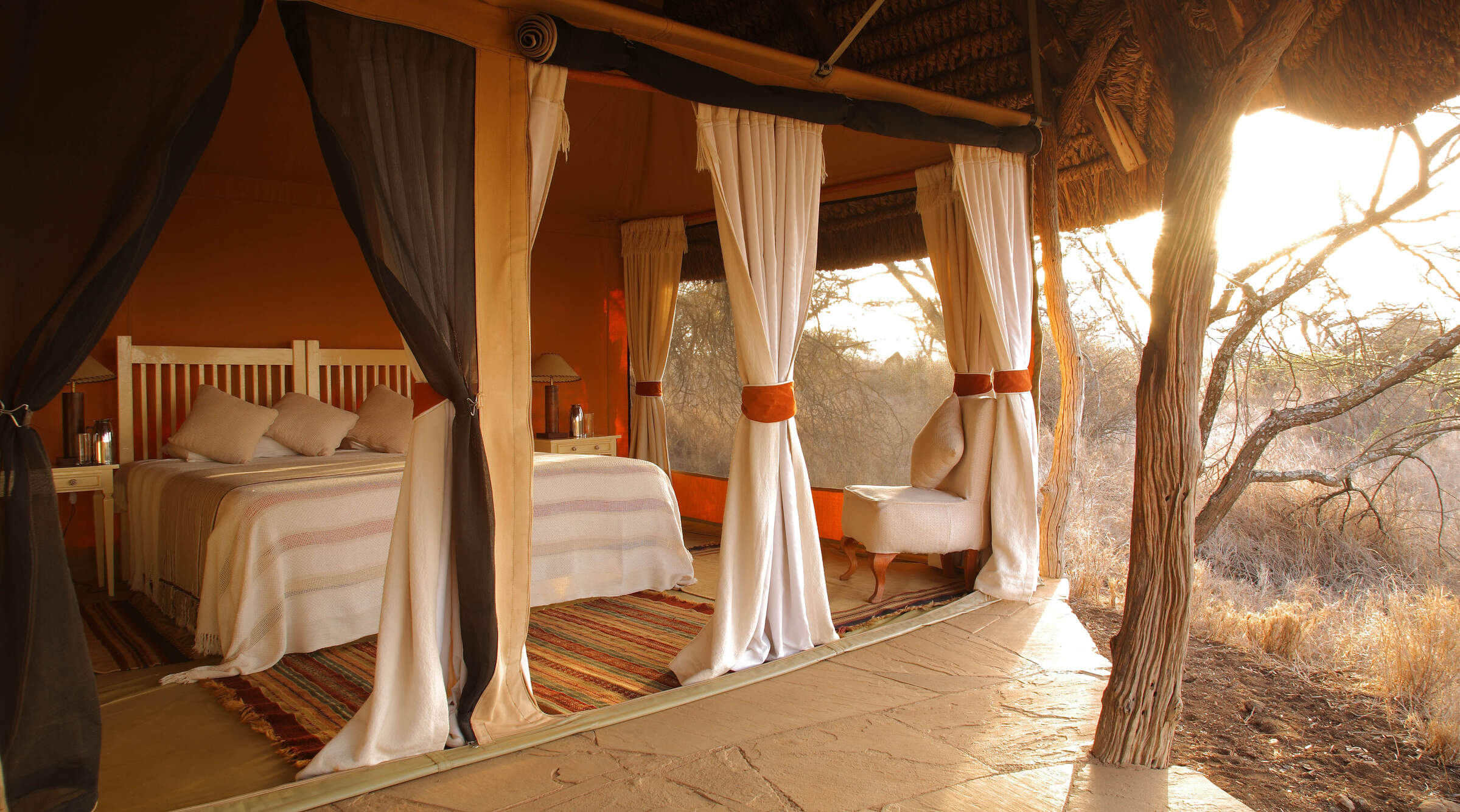
Lewa Safari Camp
Lewa Safari Camp is a comfortable and homely tented lodge, located in the Lewa Conservancy and offering a relatively exclusive safari away from mass tourism.
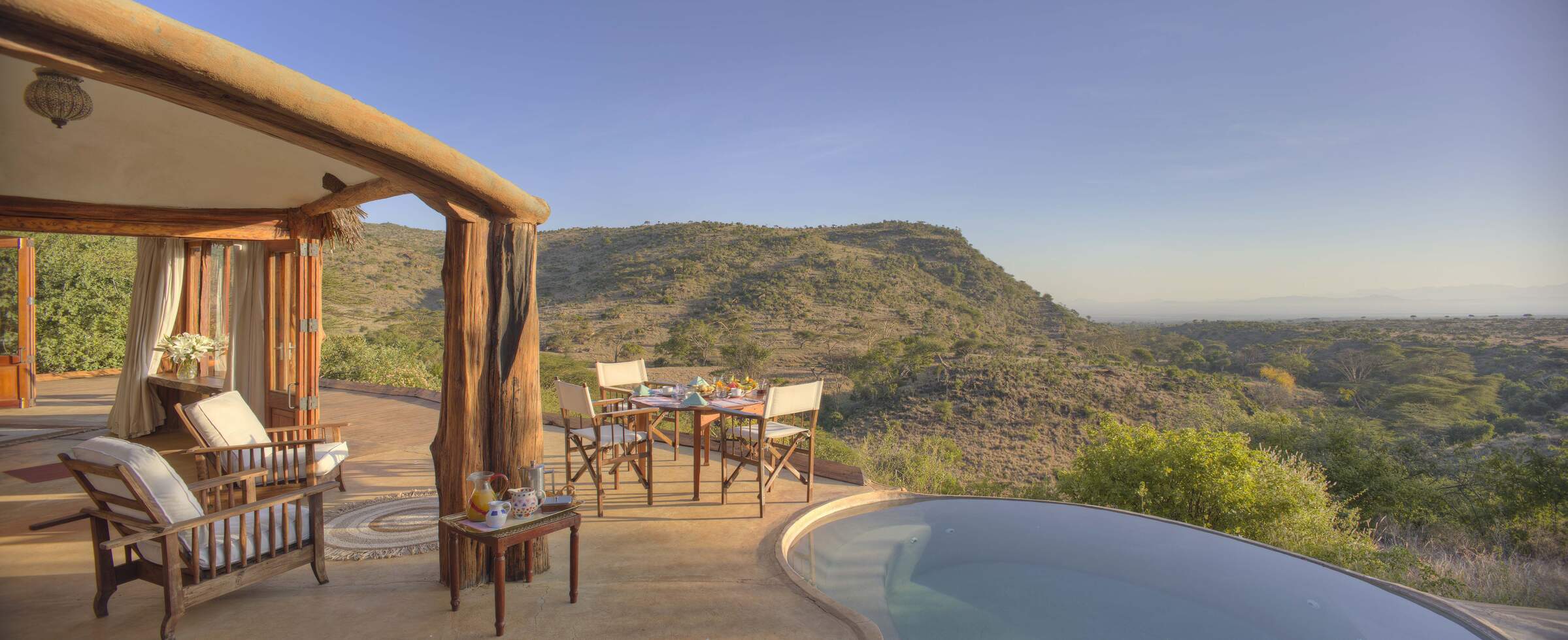
Lewa Wilderness
Lewa Wilderness is a comfortable, fenced safari lodge with nine cottages, great views and a huge range of activities.
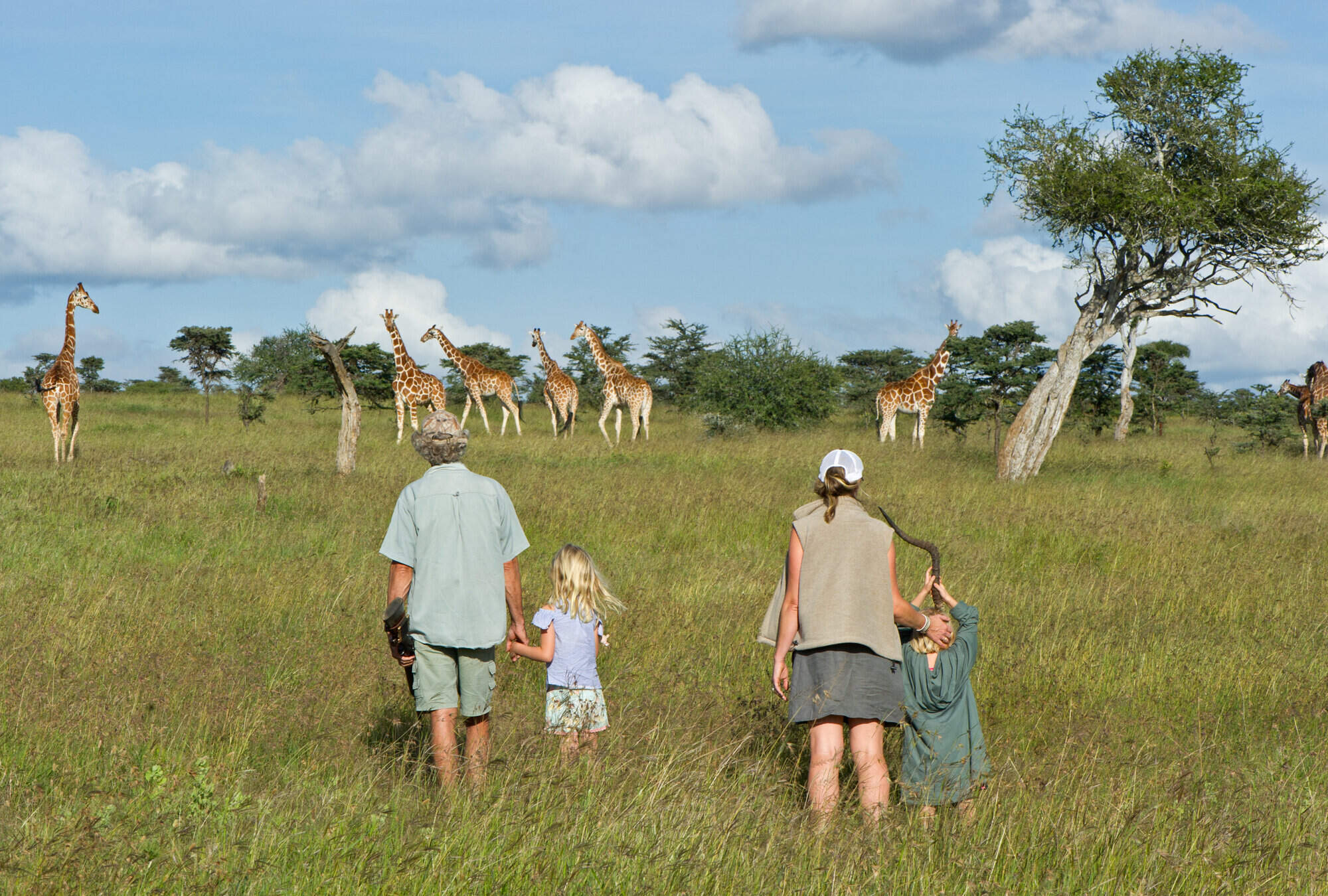
El Karama Lodge
El Karama is a comfortably rustic, very personal, riverside eco-lodge on a game-rich private ranch in Laikipia, an hour’s drive north of Nanyuki airport.
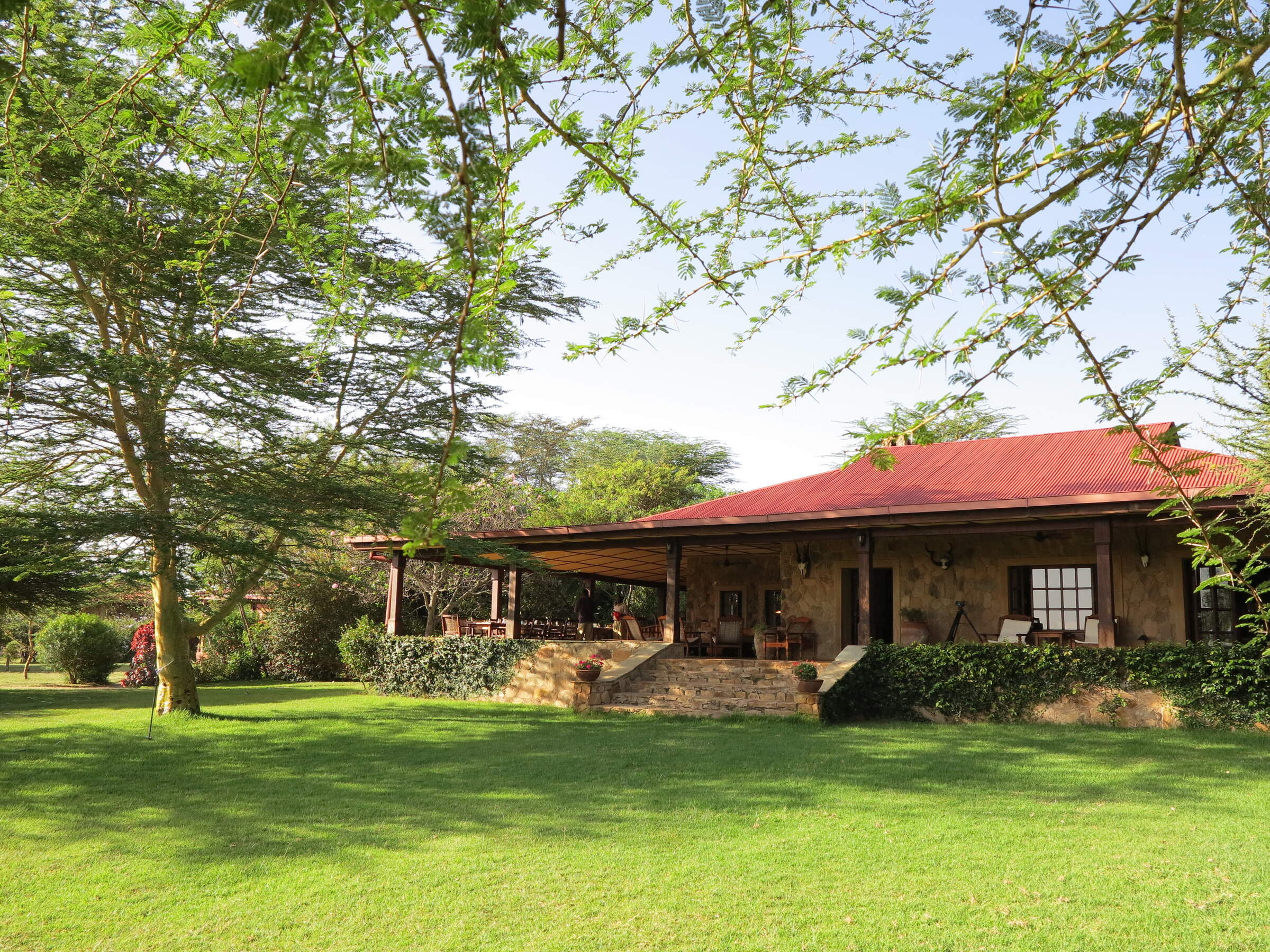
Sosian
Sosian Lodge is a distinctive, estancia-style ranch house on a former cattle ranch, with great opportunities for riding, relaxing and seeing wild dogs and other savannah wildlife.
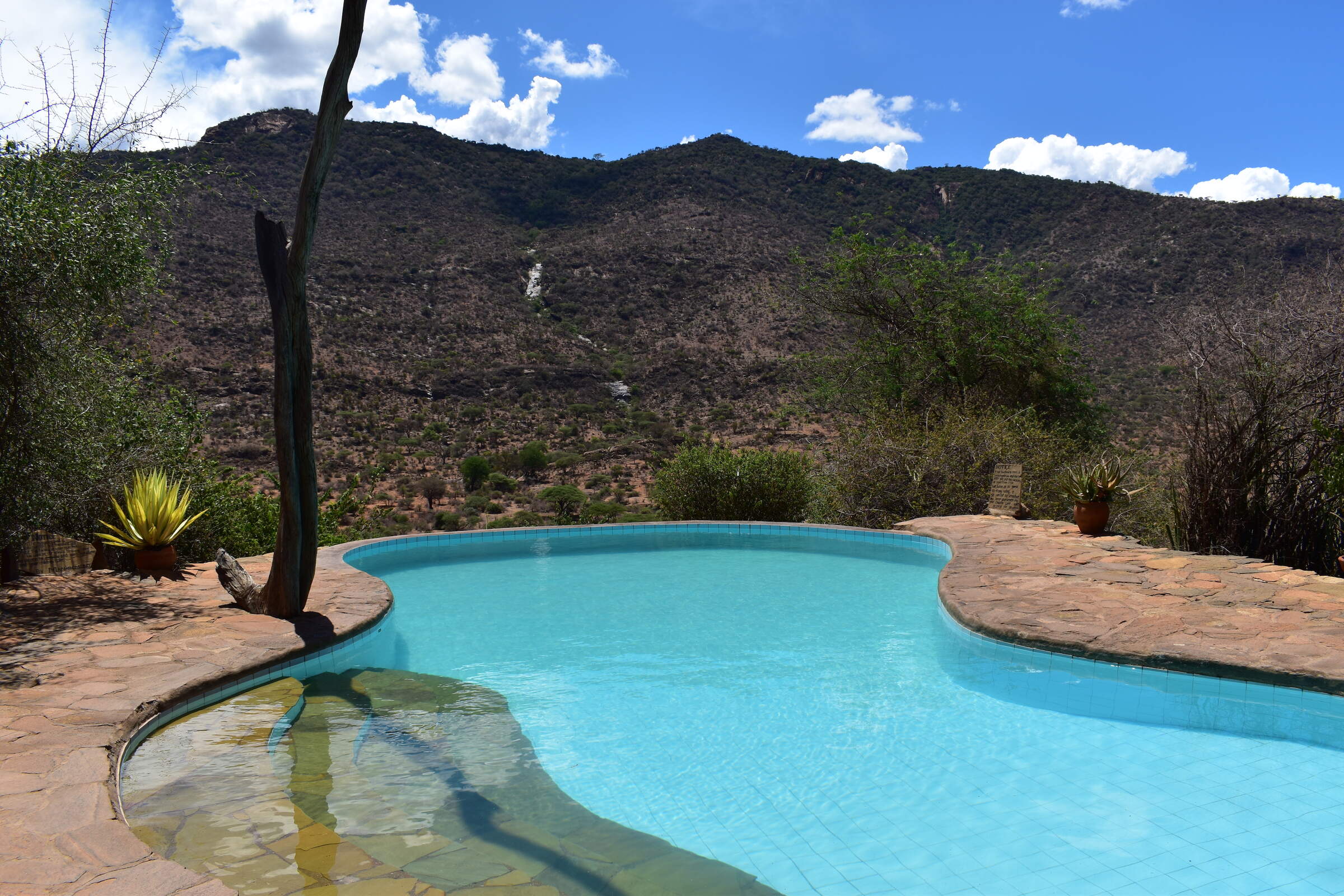
Il Ngwesi Eco-Lodge
The community-owned Il Ngwesi Eco-Lodge sits atop a small hill in the remote Il Ngwesi Group Ranch, a two-hour drive north of Lewa Conservancy in north-eastern Laikipia.
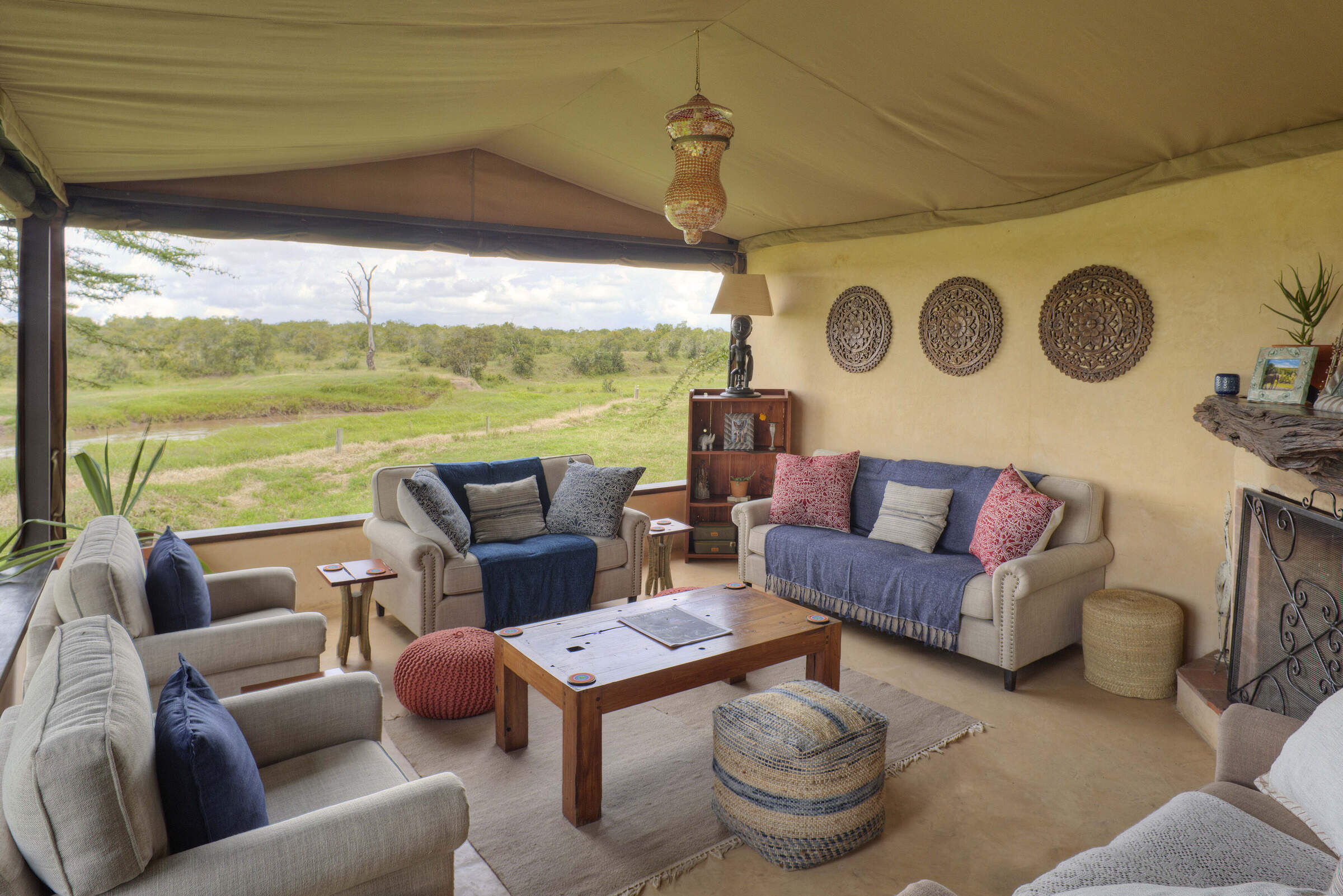
Ol Pejeta Bush Camp
Ol Pejeta Bush Camp is a simple camp, with comfortable tents, delivering an authentic wilderness experience backed up by good food and guiding.
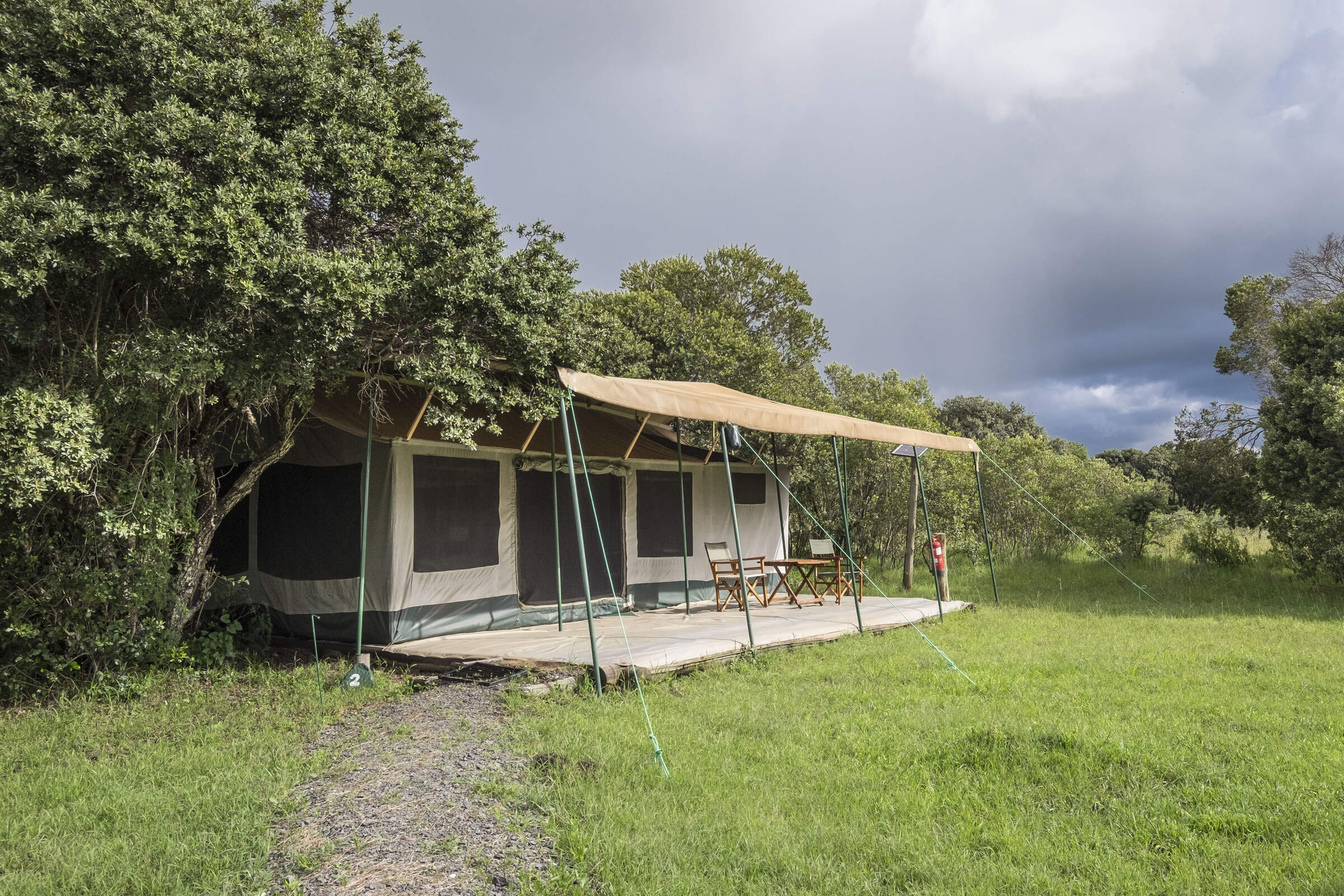
Porini Rhino Camp
Porini Rhino Camp is a small, simple, well established tented camp, with a keen focus on sustainable and low-impact tourism.
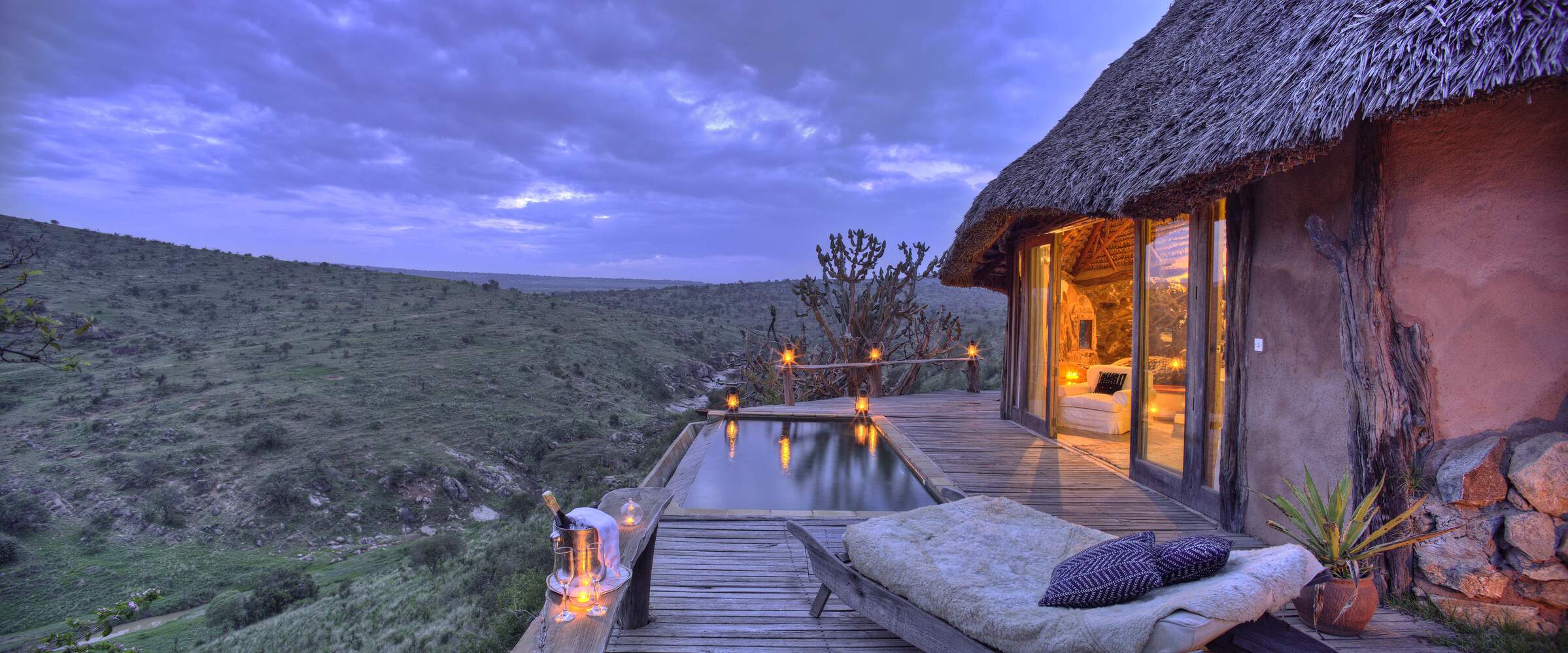
Borana
Borana is a comfortable and striking lodge on the Borana Conservancy in eastern Laikipia, offering pleasant accommodation with good food and service and a very wide range of activities.
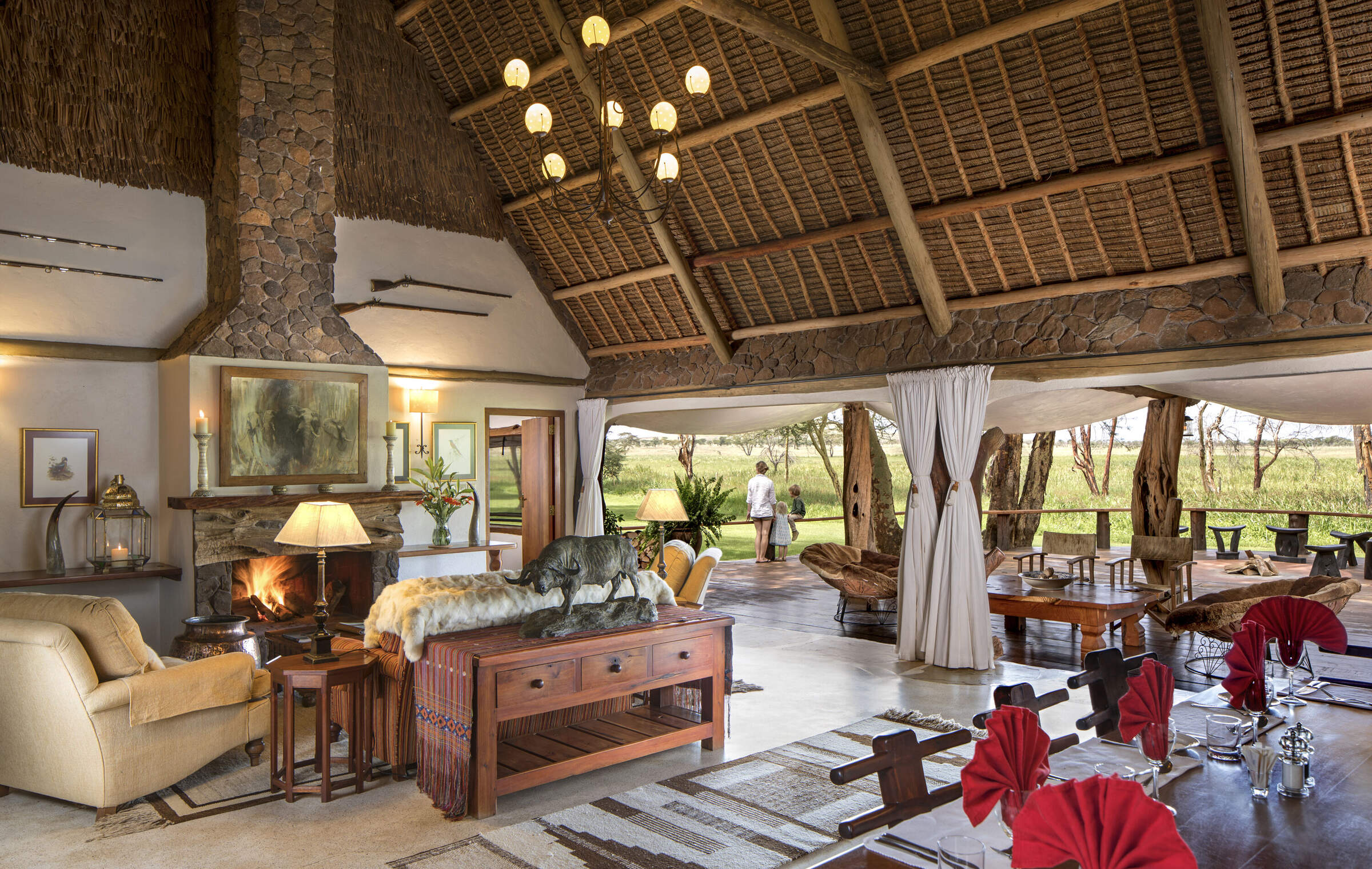
Sirikoi
Sirikoi is a small, very high-quality safari camp with excellent service and food and a wide selection of activities.
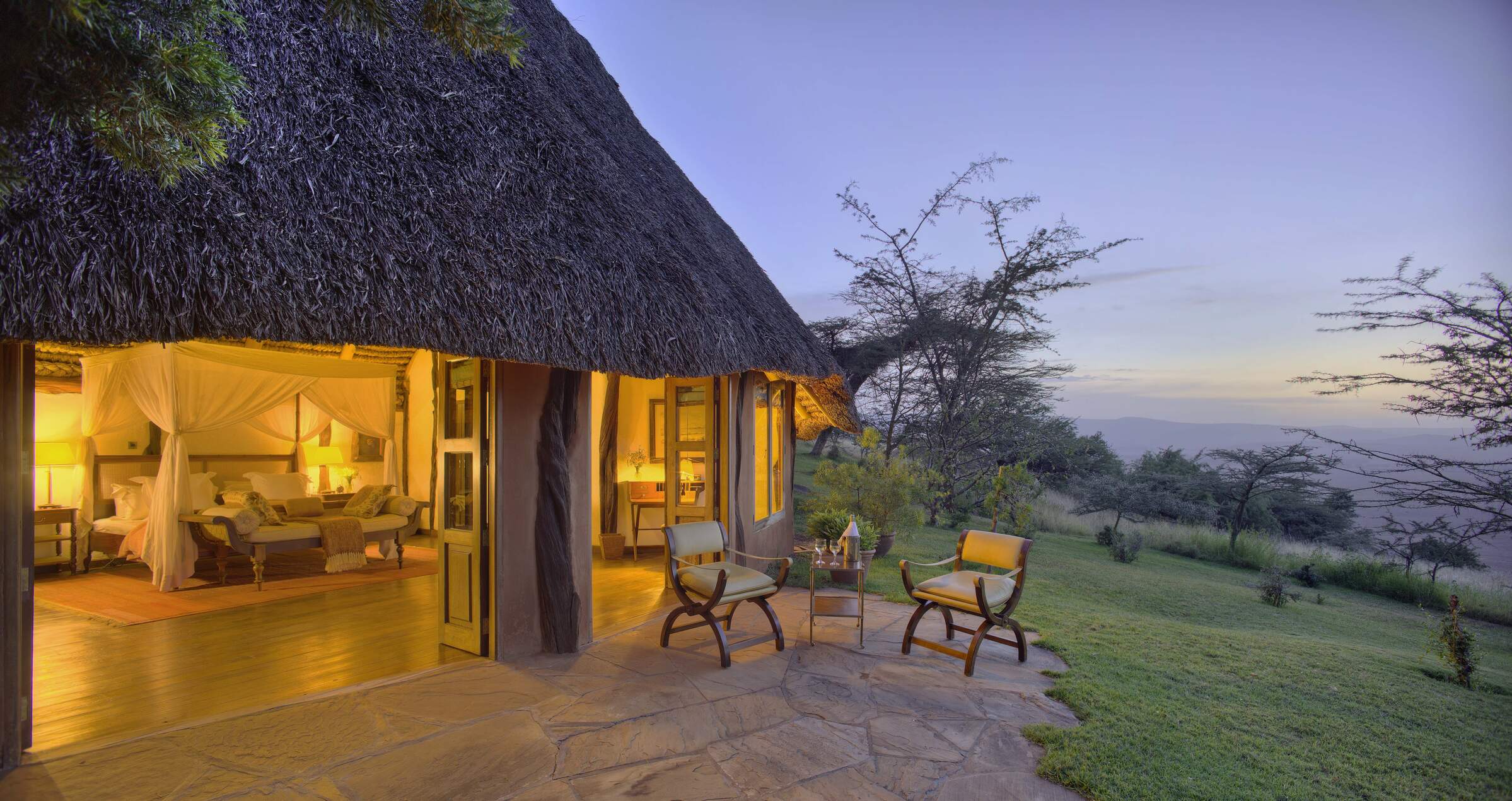
Kifaru House
Kifaru House is a small, stylish safari lodge in the Lewa Conservancy, with beautiful views across the landscape.
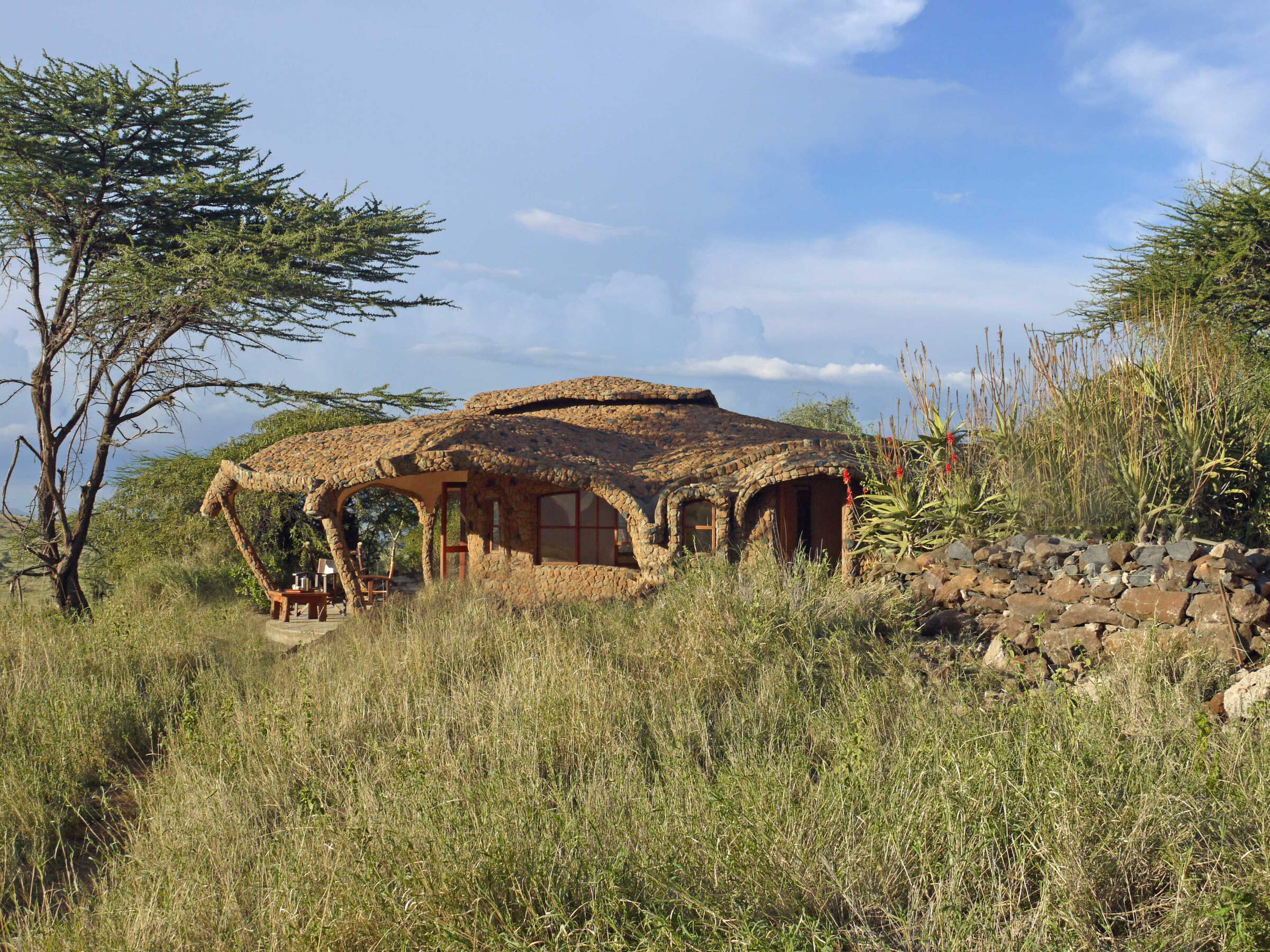
Lewa House
Lewa House is a very comfortable, boutique safari lodge located on the Lewa Conservancy, north of Mount Kenya.
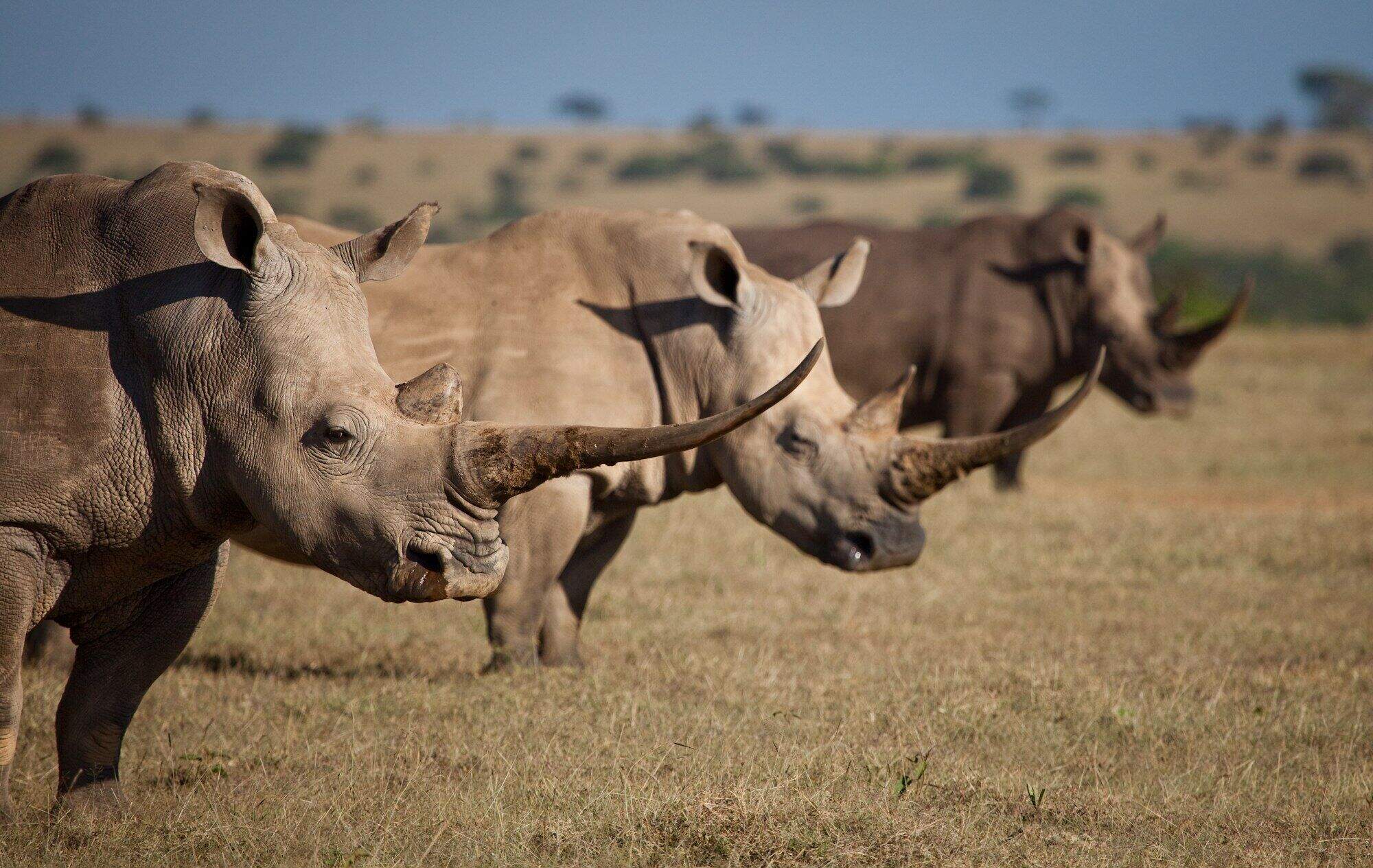
Solio Lodge
Solio Lodge is an exclusive and luxurious bush lodge set in the private Solio Game Ranch in southern Laikipia.
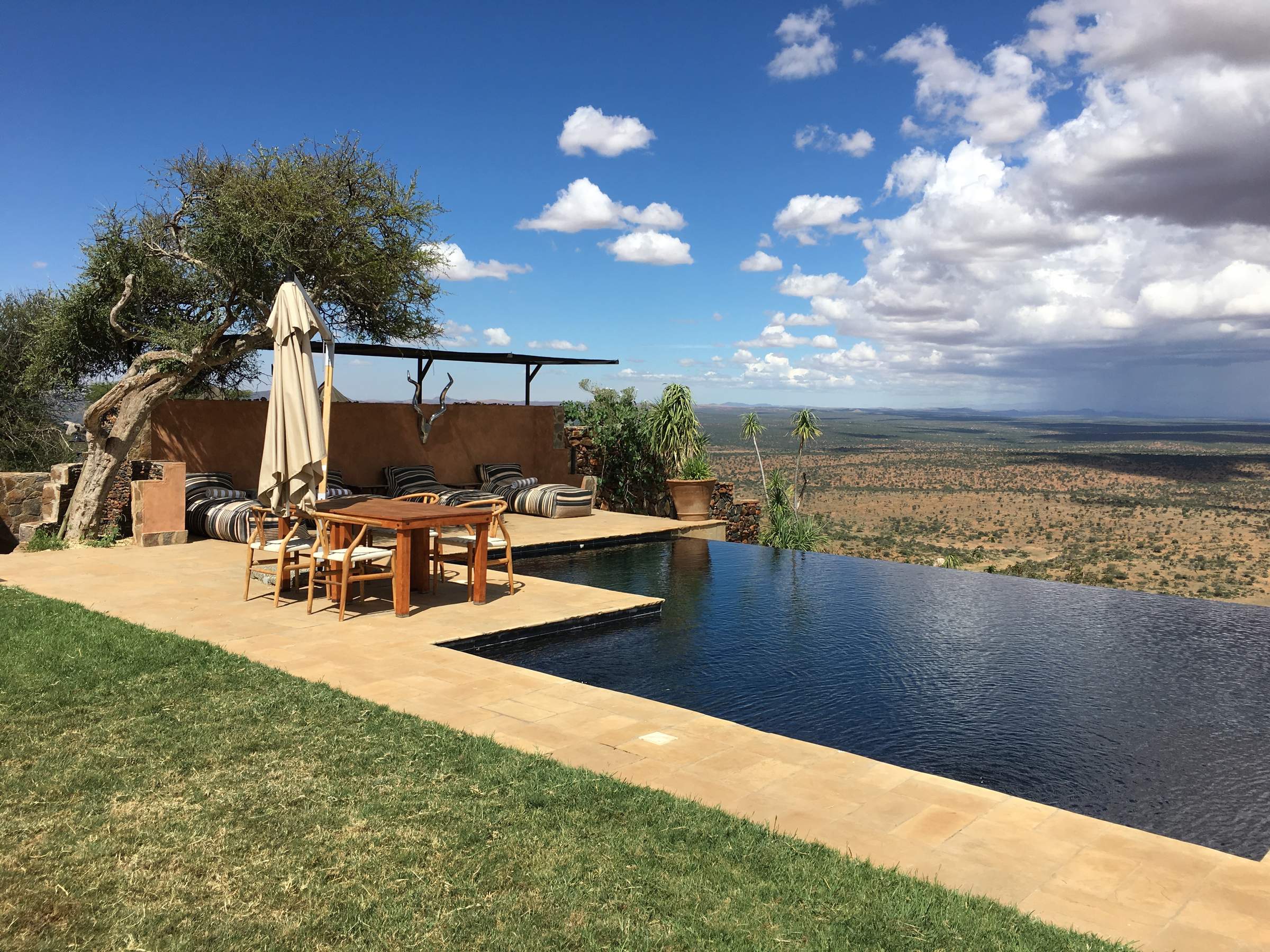
Loisaba Tented Camp
Loisaba Tented Camp is a luxury safari base of tented rooms, ranged along a ridge in the Loisaba Conservancy, facing Mount Kenya. The camp was completely rebuilt in 2016.
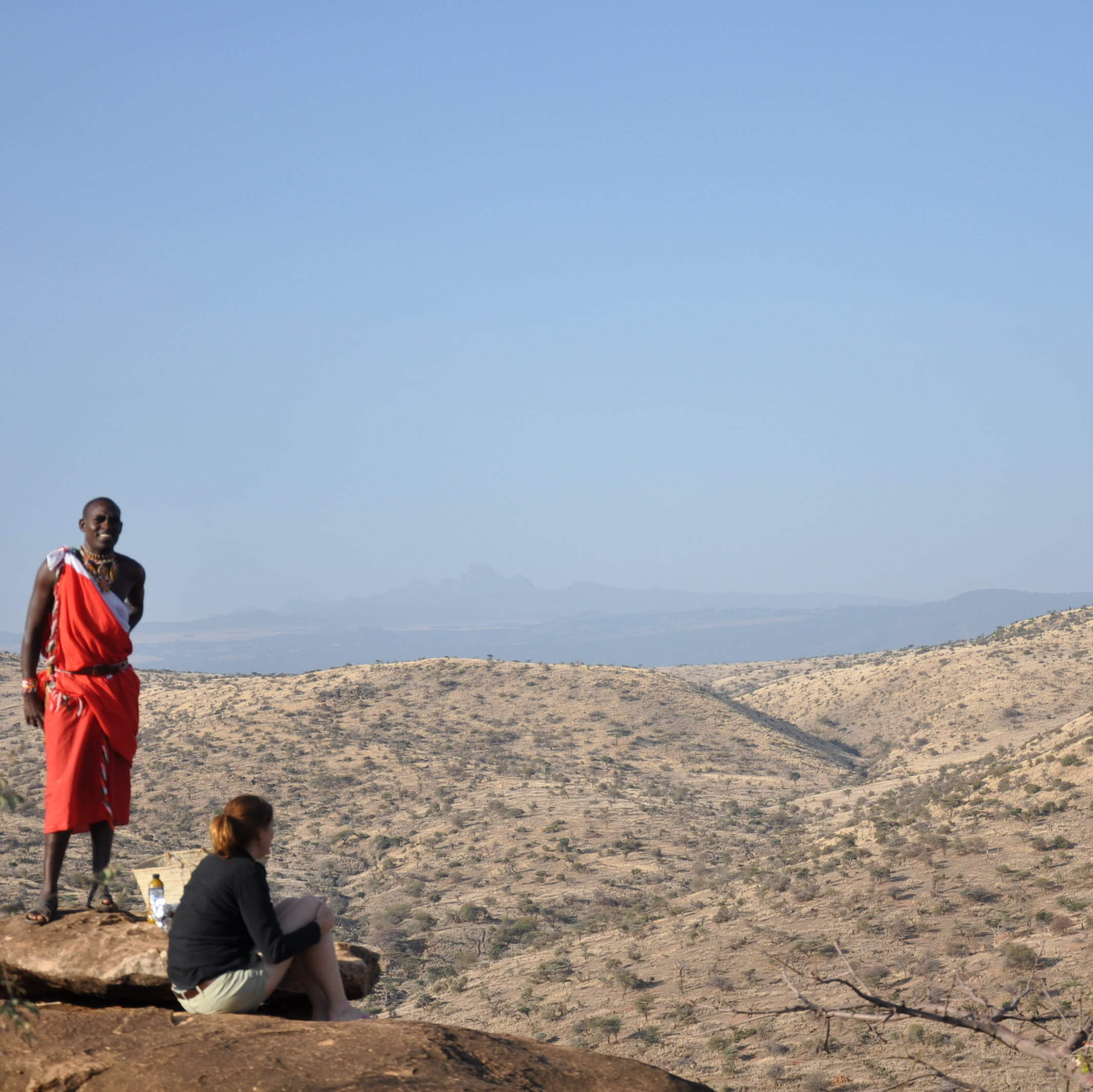
Tassia Lodge
Tassia offers a unique wilderness experience in a remote location: come here for cultural interaction, stunning views and something a bit different.
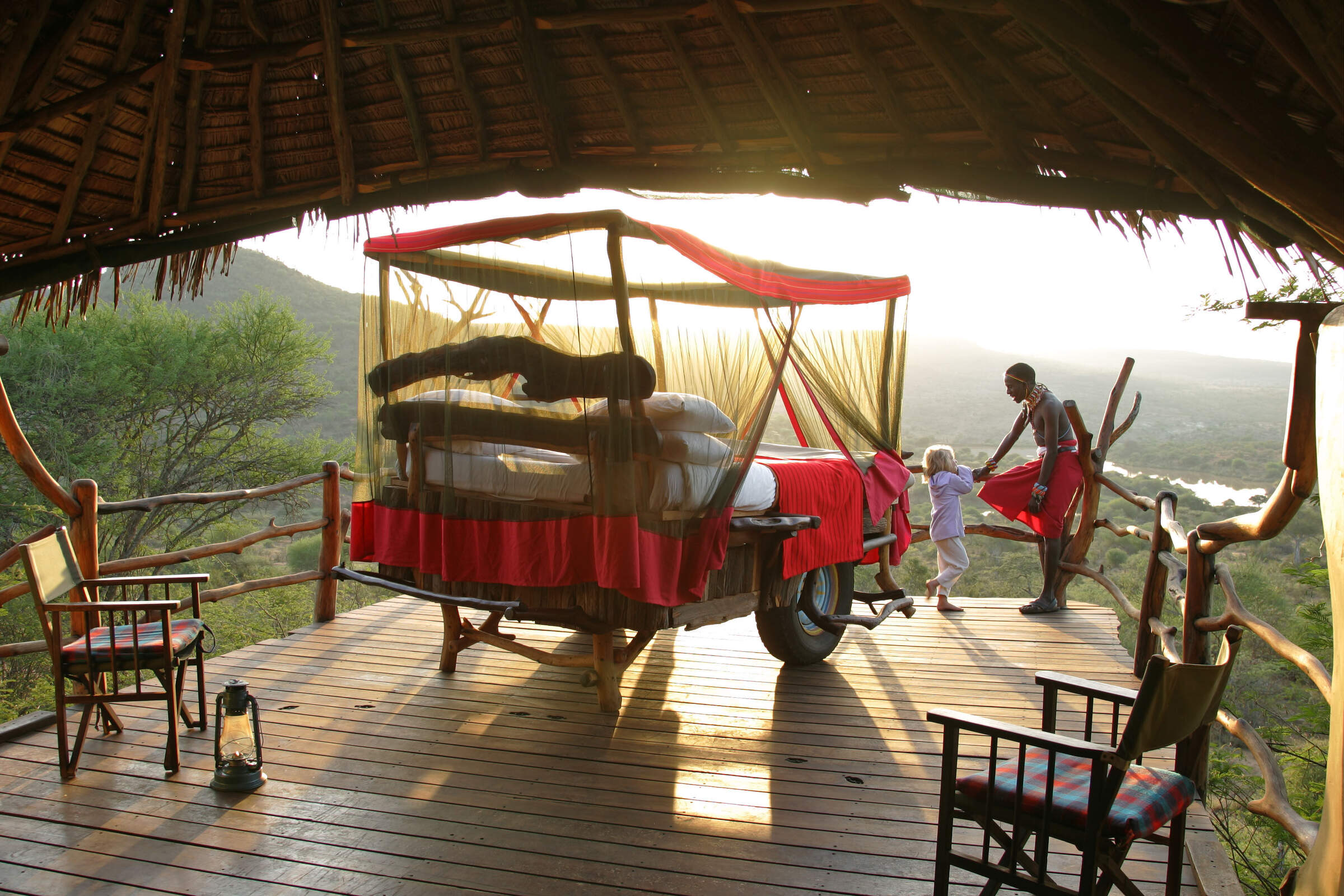
Loisaba Star Beds
Loisaba Starbeds is a simple camp of 4 rooms with pull-out, open-air 'star beds', located near a dam in the Loisaba Conservancy, in northwestern Laikipia.
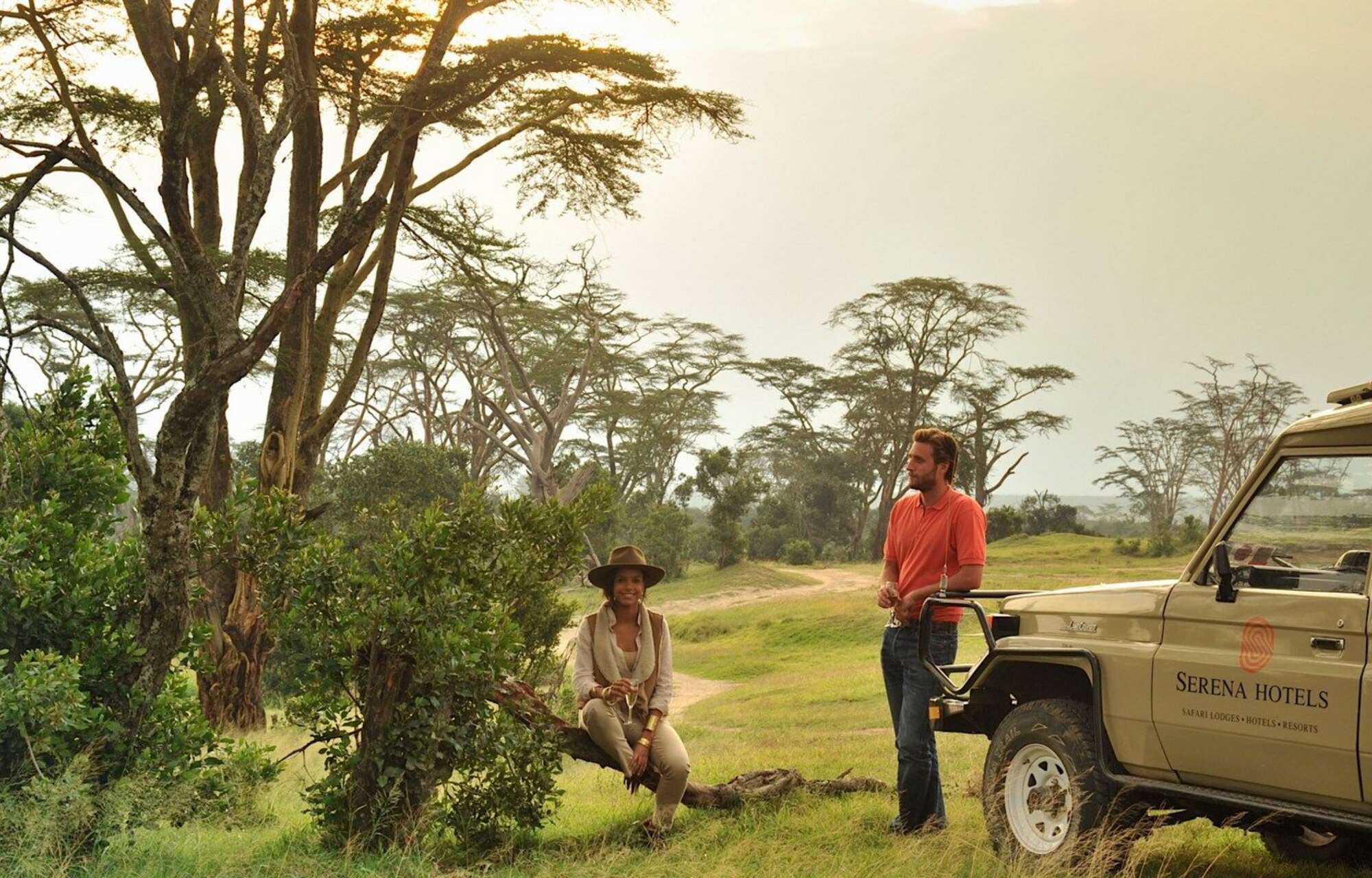
Sweetwaters Serena
Sweetwaters Serena is a large, older tented camp – the largest camp in the Laikipia region – in the eastern part of the Ol Pejeta Conservancy.
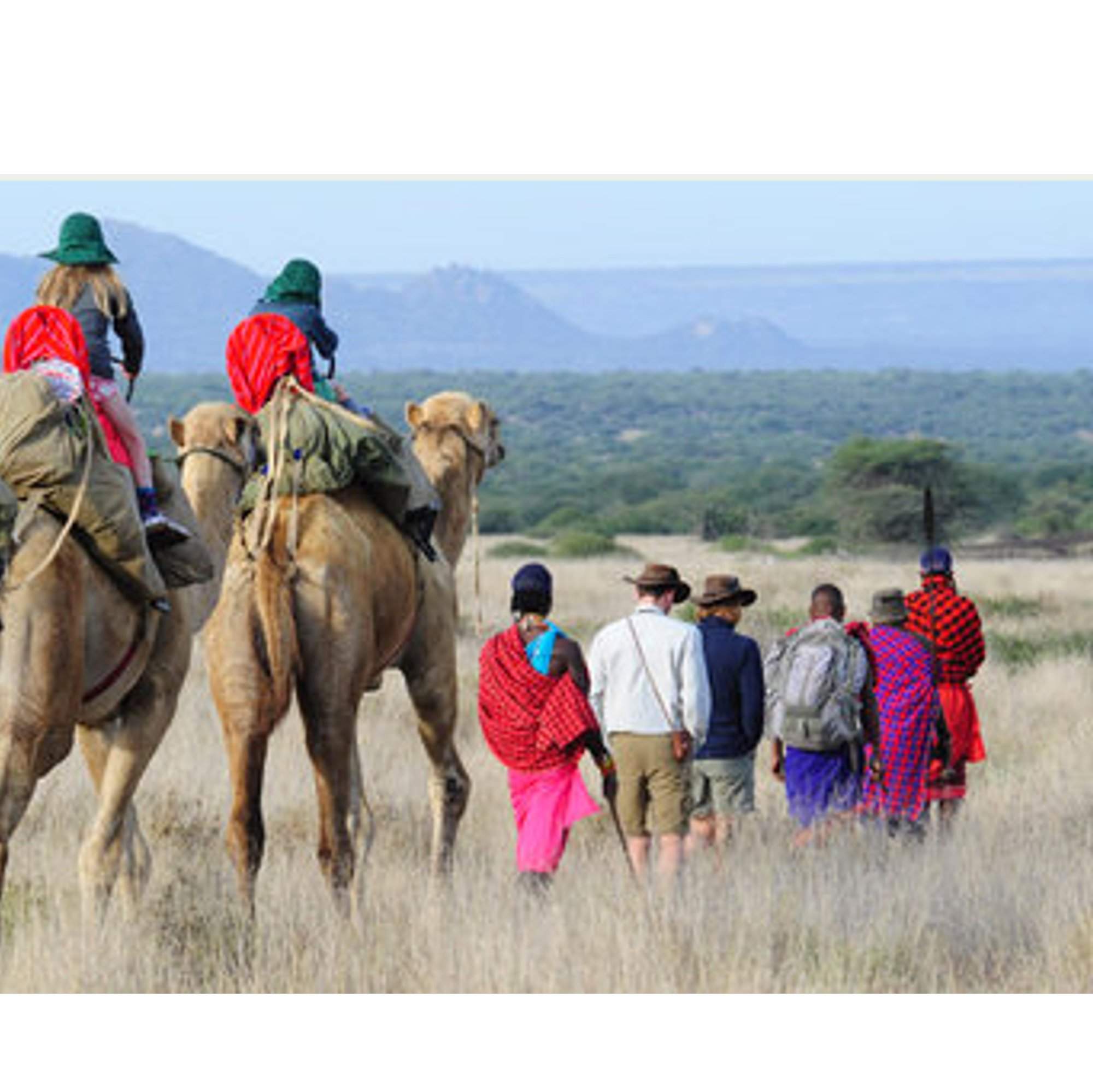
Karisia Walking Safaris
Karisia Walking Safaris operates camel assisted, multi-day walking safaris from its main camp, Tumaren, set in a remote part of Laikipia.
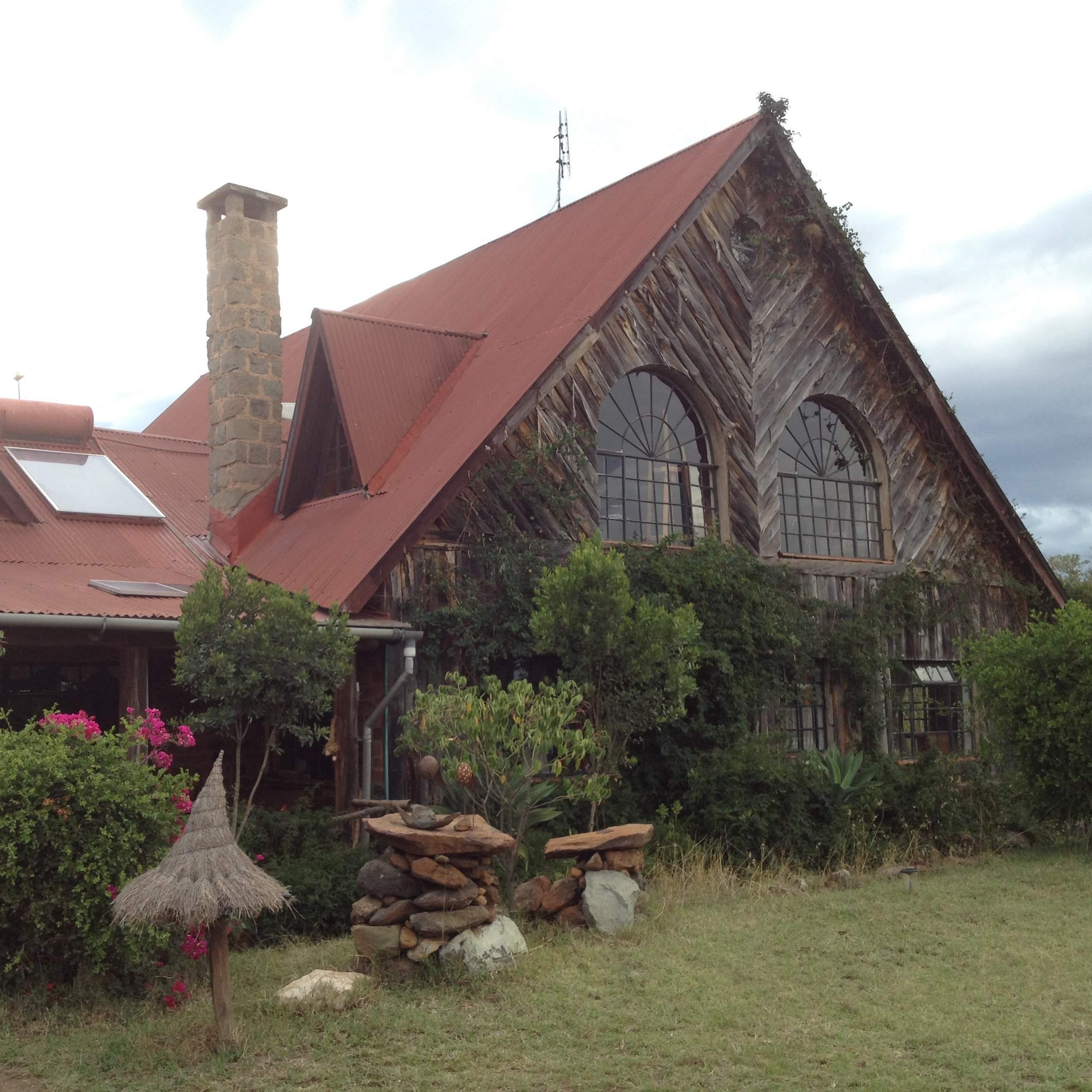
Sandai
Sandai is a pretty, owner-run homestay, set between the Aberdare Range and Mount Kenya, offering a range of activities at extra cost.
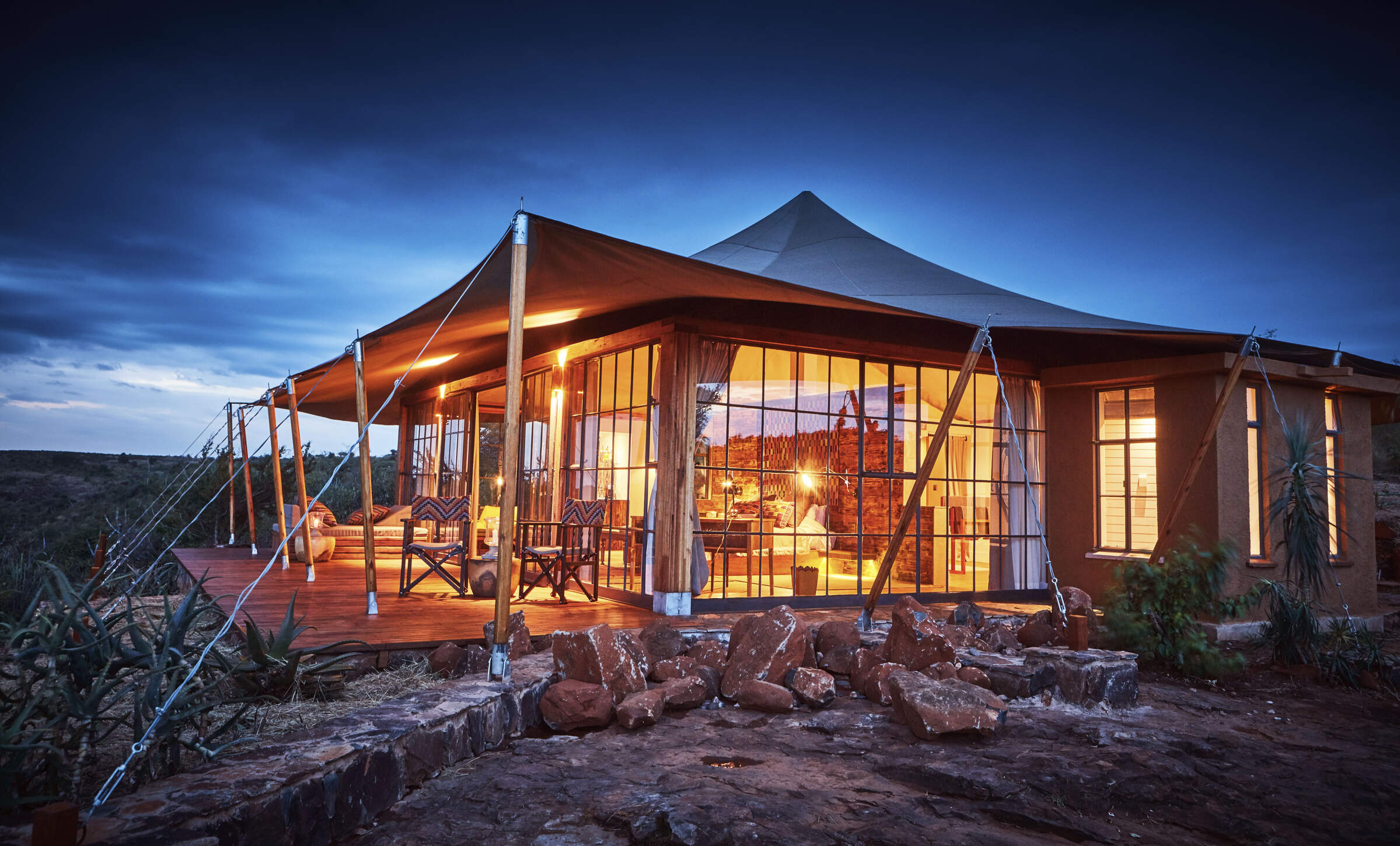
Lodo Springs
Lodo Springs is a spectacularly located luxury lodge in a remote spot in the Loisaba Conservancy, sister lodge to Loisaba Tented Camp and Loisaba Star Beds.
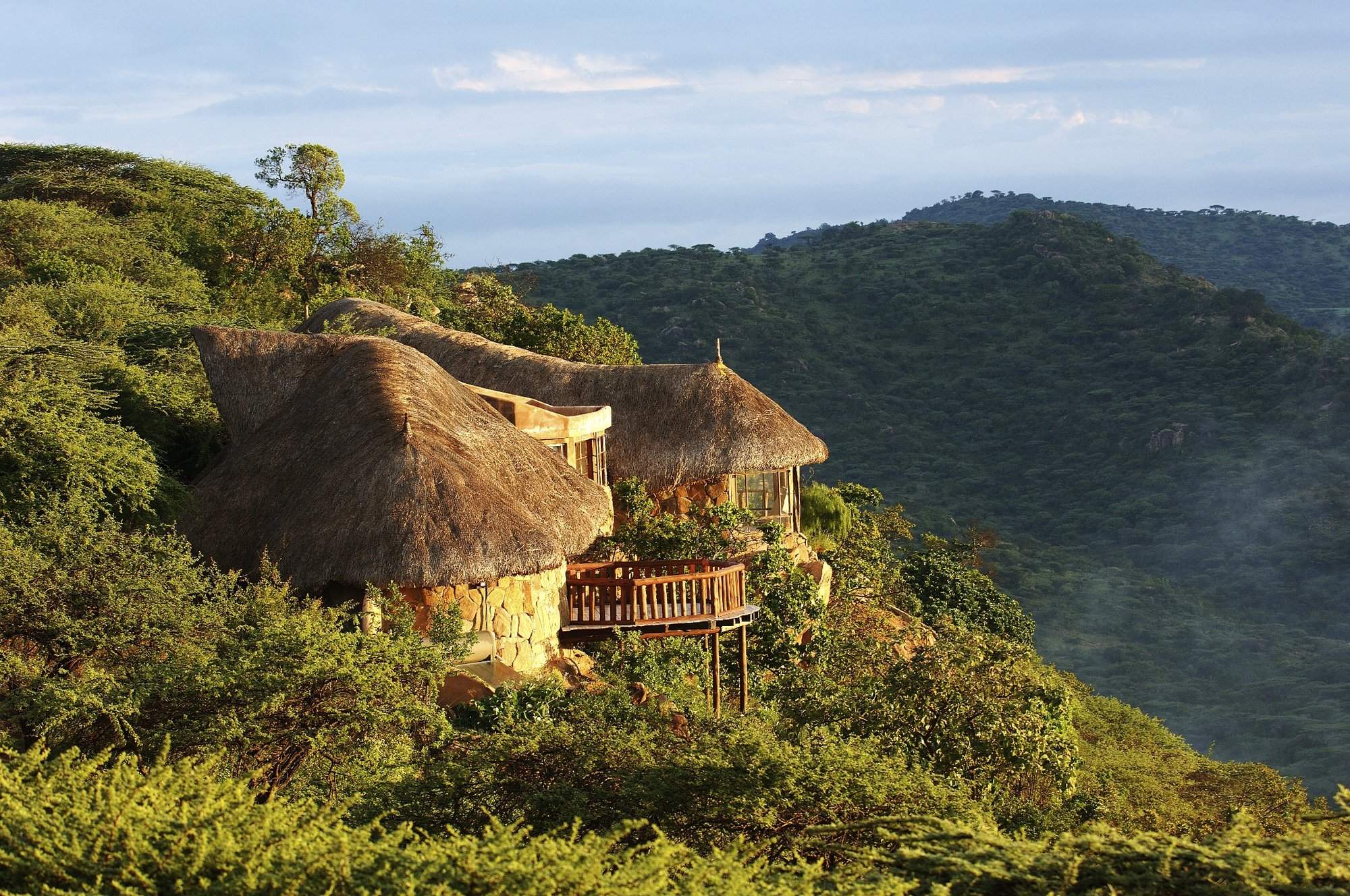
Sanctuary at Ol Lentille
The Sanctuary at Ol Lentille is an unusual safari lodge in northern Laikipia, consisting of three exclusive villas, and offering a huge range of activities.
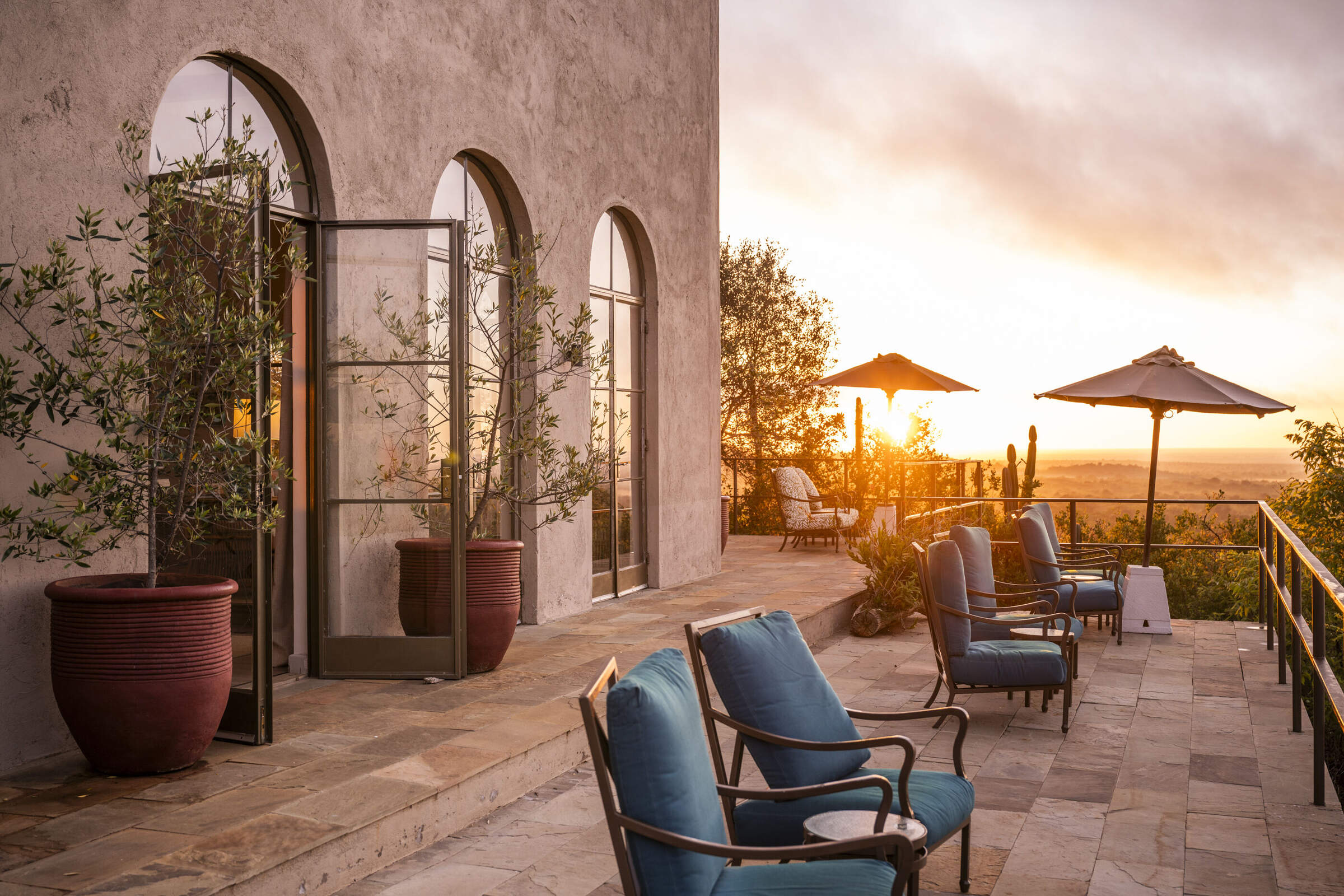
Governors' Mugie House
Governors' Mugie House – a substantial, luxury safari lodge – is one of only two properties in the Mugie Conservancy in northwestern Laikipia.
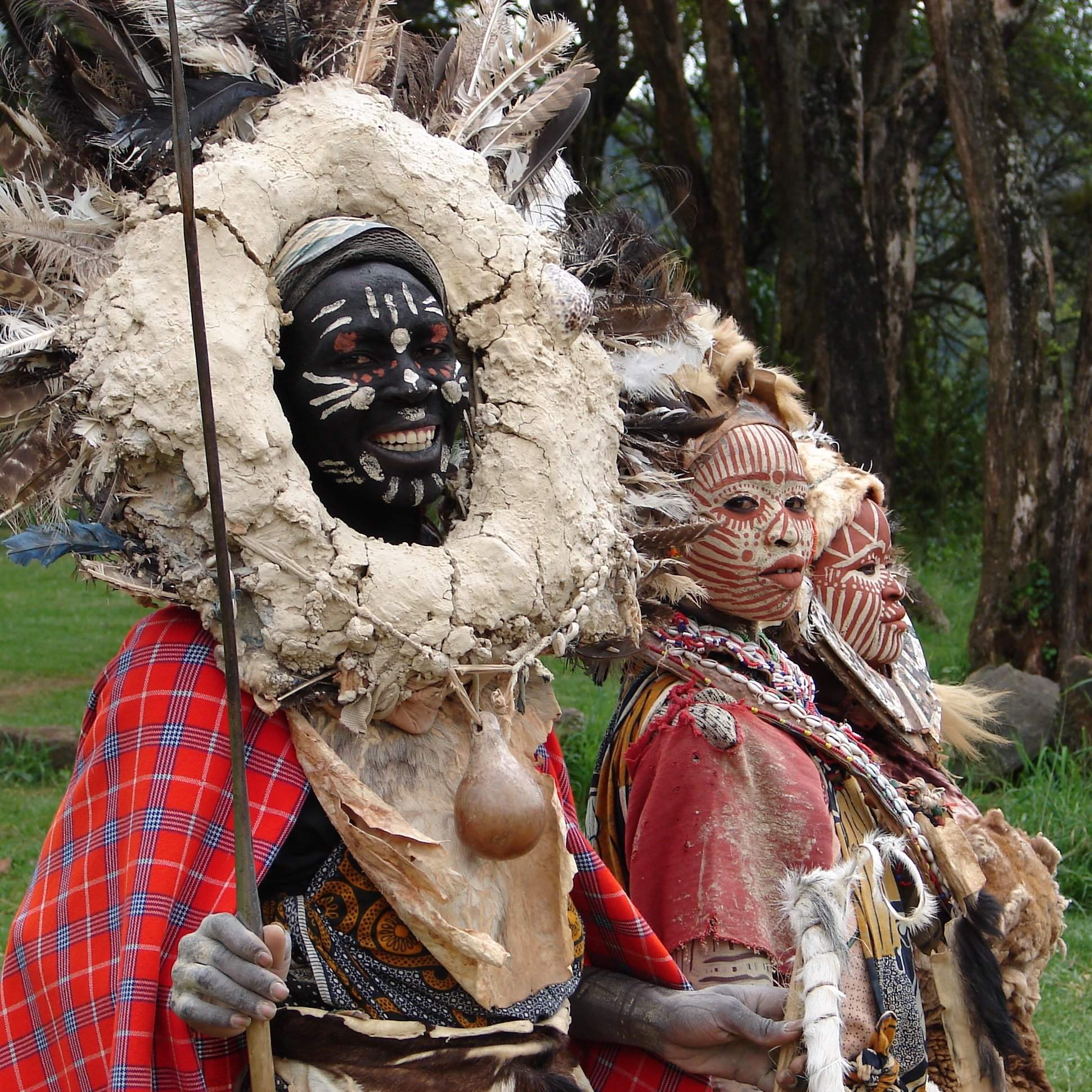
Thomsons Falls Lodge
Thomsons Falls Lodge is a simple hotel dating back to the colonial era, located above the falls of the same name, near the western Laikipia town of Nyahururu.
When to go to Laikipia
Our month by month guide: What it's like to visit Ekorian's Mugie Camp in Laikipia
Jan
Feb
Mar
Apr
May
Jun
Jul
Aug
Sep
Oct
Nov
Dec
Laikipia in January
Clear, warm days and mild nights make this a popular time for safaris in Laikipia. It's excellent for game viewing in all the conservancies, where water sources attract diverse wildlife. The dry conditions make it easier to spot black rhinos, lions and leopards. Star bed sleep-out options at a number of lodges are particularly magical under the clear night skies.
After the New Year period, many camps and lodges treat January as mid-season, offering good value. The landscape retains some greenery, enhancing photography.
- Clear days ideal for safaris
- Excellent visibility for wildlife viewing
- Dry riverbeds attract wildlife to water sources
- Calving season for wildebeest and antelopes
- Palearctic migrant birds abundant
Our view
Fantastic: the very best time to visit
Weather in January
Laikipia in February
With the short dry season well established in Laikipia, wildlife gathers close to water points, making it an excellent time for safaris. Ol Pejeta and Lewa Wildlife Conservancies offer prime viewing opportunities for endangered species like black rhinos and Grevy's zebras. Solio Rhino Conservancy provides exceptional black rhino sightings during this period. The grass is grazed down, improving visibility across the region.
February is ideal for walking safaris, where you can appreciate the smaller details of the ecosystem. The clear skies make stargazing from star beds an unforgettable experience. Cultural visits to local communities are particularly rewarding, as the pleasant weather encourages outdoor activities and interactions.
- Prime time for wildlife gathering near water
- Ideal conditions for walking safaris
- Palearctic migrant birds still present
- Low rainfall makes game drives rewarding
Our view
A very good time to visit
Weather in February
Laikipia in March
As March progresses in Laikipia, the weather becomes increasingly hot and humid with more rain likely later in the month. Through most of the month, conditions are still good for game drives in most districts. As the month advances, the buildup to the rainy season becomes apparent.
This period can offer unique photographic opportunities as animals congregate around diminishing water sources. Accommodation costs decrease as the low season approaches.
- Early month offers great wildlife viewing
- Hot weather transitions to occasional rains
- Lower visitor numbers
- Lush vegetation begins to appear
Our view
A good time to visit, with pros & cons
Weather in March
Laikipia in April
April usually sees established, serious rainfall in much of Laikipia, transforming the landscape. The southeast monsoon wind brings cooler temperatures and frequent downpours. While game viewing can be challenging due to lush vegetation, the green season offers unique experiences, with new-born animals visible among the verdant scenery.
The landscape bursts into life with vibrant colours, ideal for photography. Birdwatching is excellent with many species breeding. This is a quieter time for tourism, with lower accommodation rates at many places allowing for a more exclusive safari experience for great levels of service.
- Long rains begin, transforming landscapes
- Green season offers unique photo opportunities
- Lower rates at Laikipia's luxury lodges
- Buffalo and zebra calving season commences
- Birdwatching excellent
Our view
A good time to visit, with pros & cons
Weather in April
Laikipia in May
May in Laikipia is characterised by ongoing rains and lush vegetation. While game viewing can be trickier, the vibrant landscapes offer spectacular photographic opportunities with very little dust. The landscapes are a sea of green, with diverse and thriving flora.
This is an excellent time for birdwatching across the region as breeding season continues. The Ewaso Nyiro river swells impressively. Despite potential challenges, patient visitors may witness dramatic scenes of predators hunting in the thick vegetation.
- Lush vegetation makes wildlife spotting trickier
- Great for landscape and nature photography
- Rutting season for wildebeest and impalas
- Frog breeding season in Laikipia's wetlands
- Mount Kenya views improve with clearer air
Our view
A good time to visit, with pros & cons
Weather in May
Laikipia in June
As June progresses in Laikipia, the rains give way to slightly cooler, cloudy weather. This transition marks the beginning of a long, generally dry, high season for visitors. Game viewing improves as vegetation starts to thin, and conditions are comfortable.
The Ewaso Nyiro river, still full from the rains, attracts diverse wildlife. Accommodation rates begin to rise, reflecting the start of peak season.
- Rains subside, ushering in cooler weather
- High season begins with increased visitors
- Comfortable conditions game viewing
Our view
A good time to visit, with pros & cons
Weather in June
Laikipia in July
July in Laikipia brings cooler temperatures and ideal conditions for safaris. Animals concentrate around water sources on the conservancies, providing excellent game viewing opportunities.
July marks the peak of the high season, with higher accommodation rates and visitor numbers. The dry conditions make it easier to spot elusive species like leopards and black rhinos.
- Cool weather perfect for walking and riding
- Wildlife concentrates around water sources
- Excellent conditions for photography tours
Our view
A good time to visit, with pros & cons
Weather in July
Laikipia in August
August in Laikipia offers mild, dry weather, perfect for safaris. The conservancies teem with wildlife, including endangered species like black rhinos and Grevy's zebras. The landscapes offer stunning vistas and excellent conditions for game drives and walking safaris. The dry conditions make it easier to spot big cats across the region. This is peak season, so expect higher visitor numbers and accommodation rates.
You might consider combining your Laikipia safari with a stay at the nearby Samburu National Reserve, known for its “northern five” species – Grevy’s zebra, reticulated giraffe, beisa oryx, gerenuk and Somali ostrich.
- Peak season for wildlife viewing in Laikipia
- Mild weather ideal for outdoor activities
- Busy period requires advance bookings
Our view
A good time to visit, with pros & cons
Weather in August
Laikipia in September
As September progresses in Laikipia, the weather typically remains dry with clearing skies, signalling excellent safari conditions. Early September can be busy, but visitor numbers decrease later in the month. In the conservancies, game viewing is exceptional as animals congregate around limited water sources.
September generally offers excellent conditions for photography.
- Hot, dry weather with good visibility
- Quieter period for more exclusive safaris
- Natural bush fires flush out insects and small animals for predators
Our view
Fantastic: the very best time to visit
Weather in September
Laikipia in October
October in Laikipia brings generally hot and mostly dry conditions, ideal for safaris. It's a favourite month for many visitors due to the good weather and fewer visitors. The conservancies offer excellent game viewing, with animals concentrated around water sources. The Solio Rhino Conservancy provides exceptional rhino sightings in the dry conditions.
Birdwatching is rewarding as Palearctic migrants begin to arrive. Cultural visits to Maasai communities remain a highlight. Consider combining your Laikipia safari with a trip to the nearby Samburu National Reserve for a diverse wildlife experience.
- Warm or hot and mostly dry conditions for safaris
- Migratory birds start arriving
- Perfect for photography
Our view
A very good time to visit
Weather in October
Laikipia in November
November in Laikipia marks the beginning of the short rains, usually in the latter half of the month. This transition brings about dramatic changes in the landscape. Early November can still offer good game viewing before the rains intensify. Then the bush begins to green, creating beautiful scenery.
As the low season begins, accommodation rates decrease, and visitor numbers drop too, allowing for a more exclusive safari experience. Birdwatching becomes excellent with the arrival of many migratory species. November is ideal for photographers capturing the changing landscapes and dramatic skies, with low dust and clear air. Cultural visits to Maasai communities offer insights into how local life adapts to the changing seasons.
- Short rains begin, transforming landscapes
- Low season offers better rates and privacy
- Excellent time for birdwatching in Laikipia
- Lush scenery provides stunning backdrops
Our view
A good time to visit, with pros & cons
Weather in November
Laikipia in December
In a typical December, Laikipia sees the short rains finish by mid-month, leaving the landscape at its most beautiful. Clear blue skies return, heralding the start of the second peak visitor season from around 20 December onwards. The conservancies offer excellent game viewing with lush backdrops.
Christmas can occasionally be wet, but most years see perfect safari conditions by the festive season. This is an ideal time to combine wildlife viewing with cultural experiences, such as visiting Maasai communities.
- Rains typically end, leaving landscapes lush
- Peak tourist season begins mid-month
- Christmas safaris popular in conservancies
- Night sky clarity ideal for stargazing
Our view
A good time to visit, with pros & cons
Weather in December

Looking for inspiration on where to travel next?
Visit our trip chooser to explore your options and find inspiration for your perfect African adventure
Inspire me